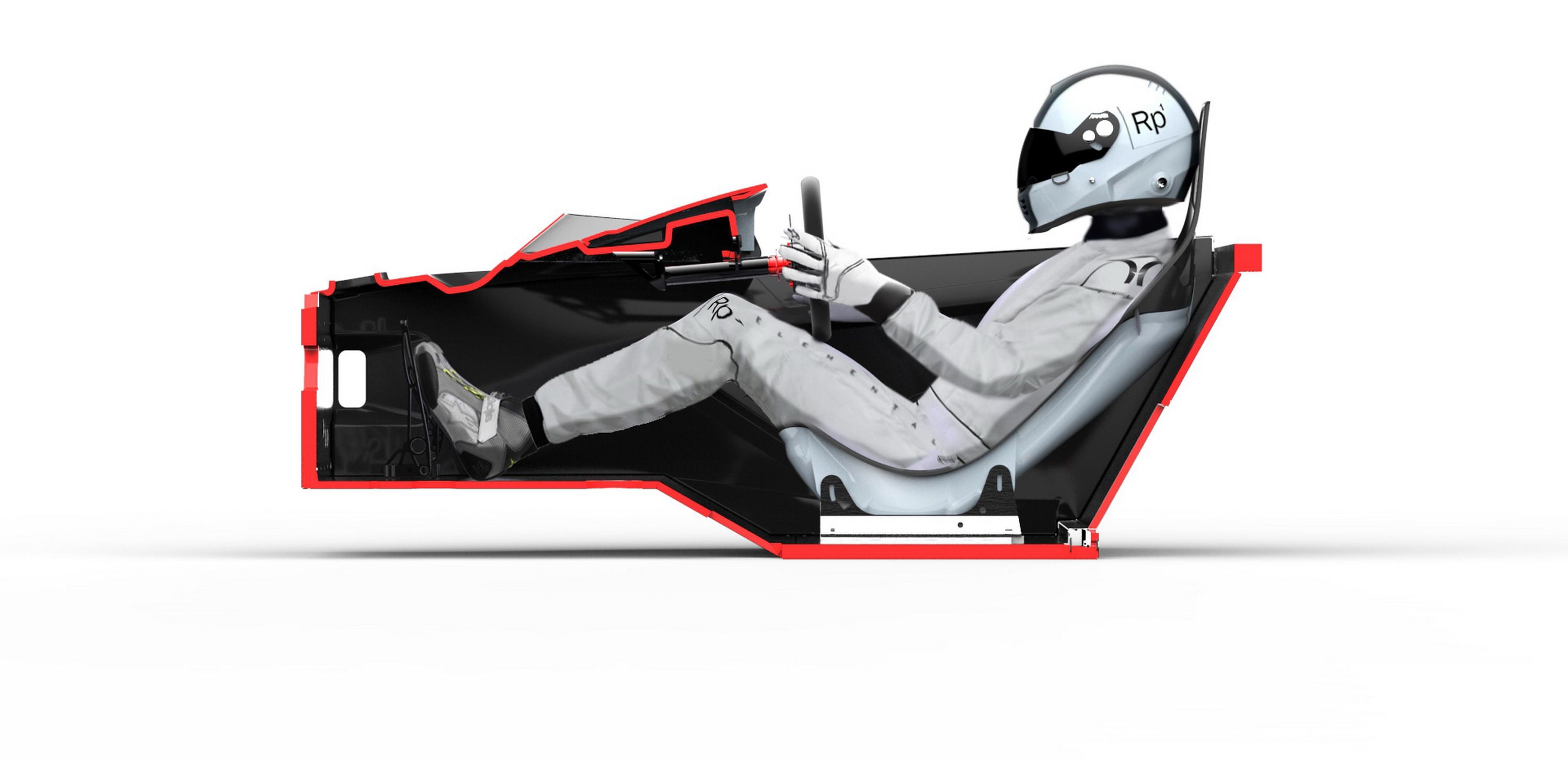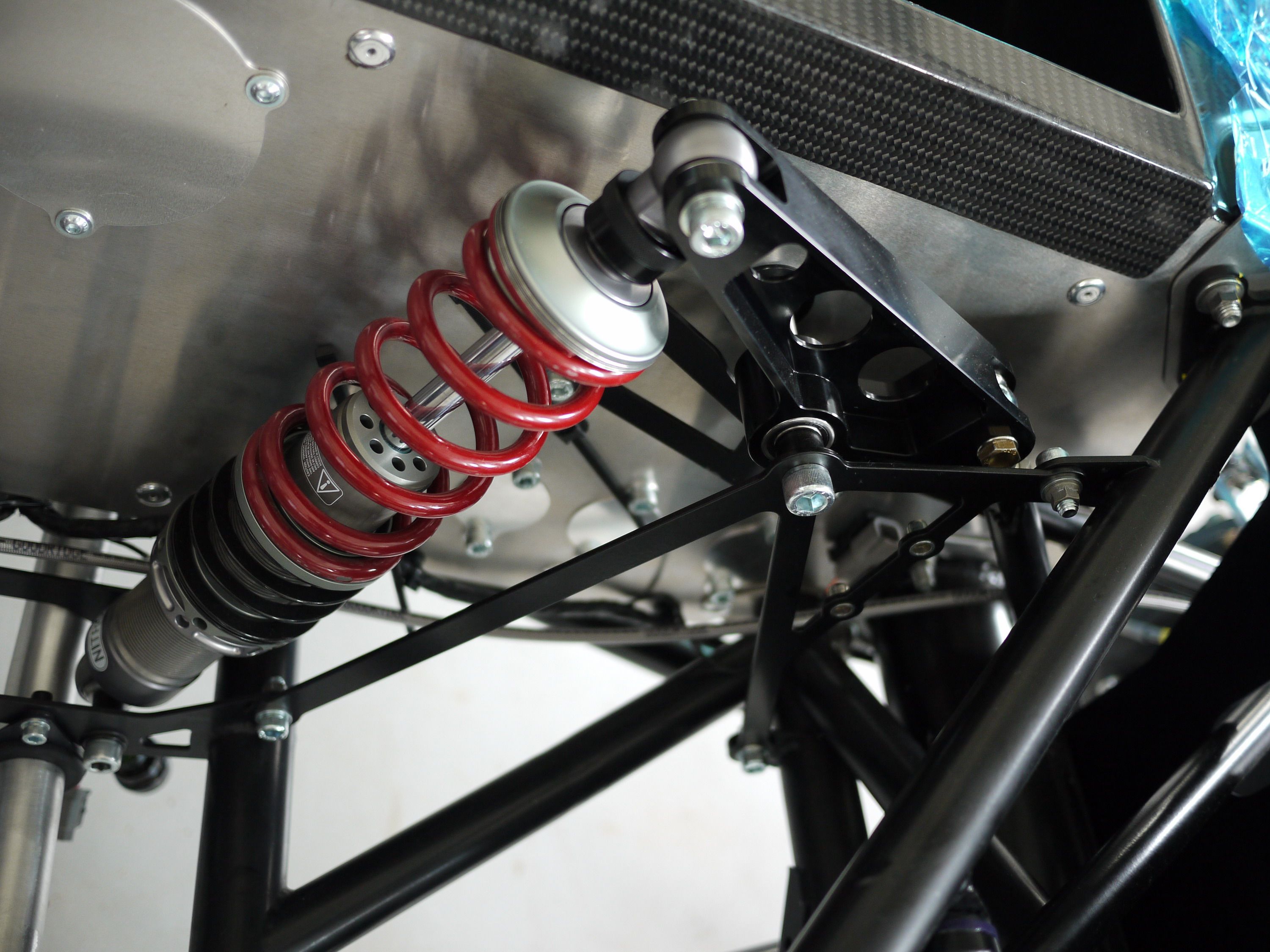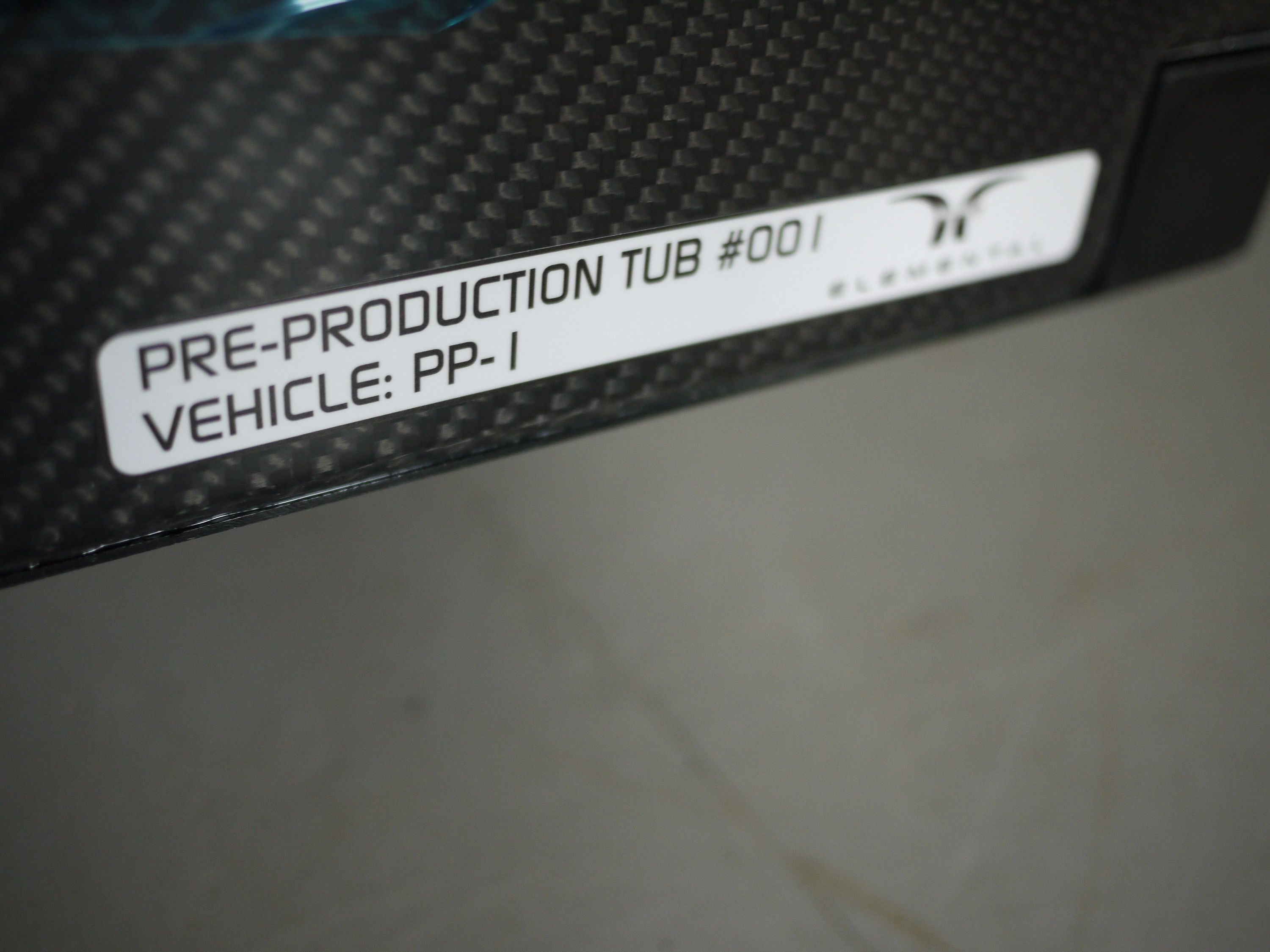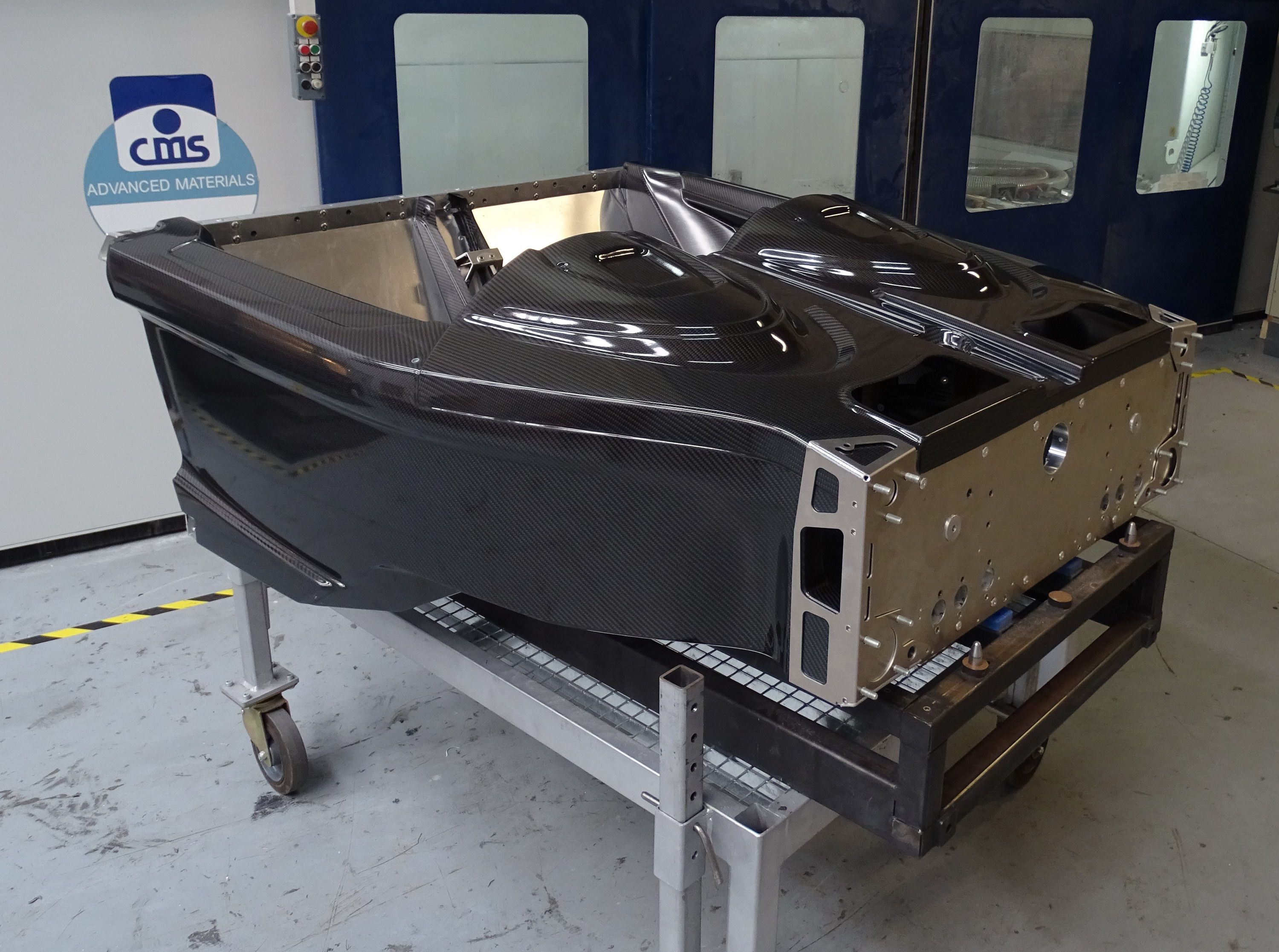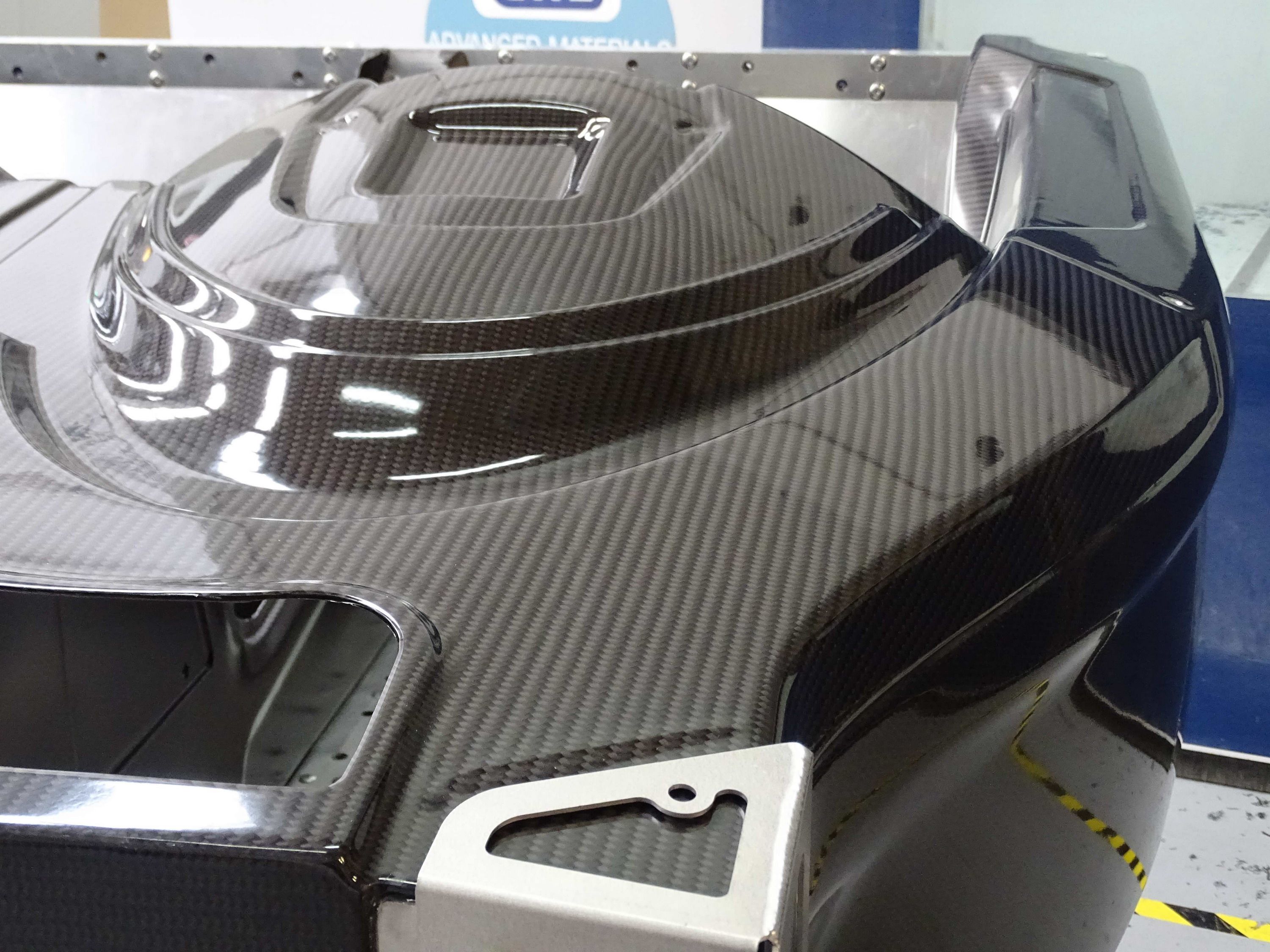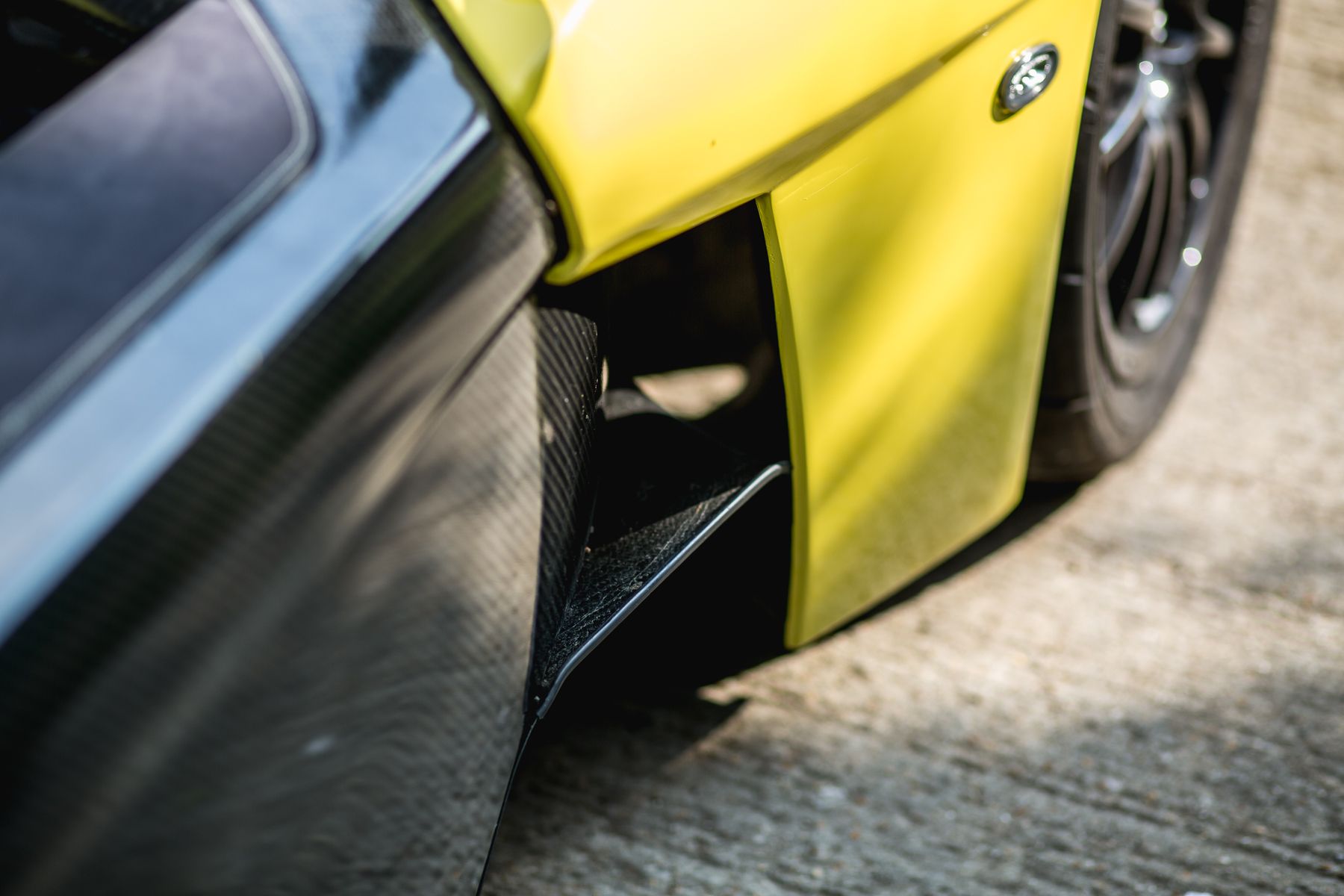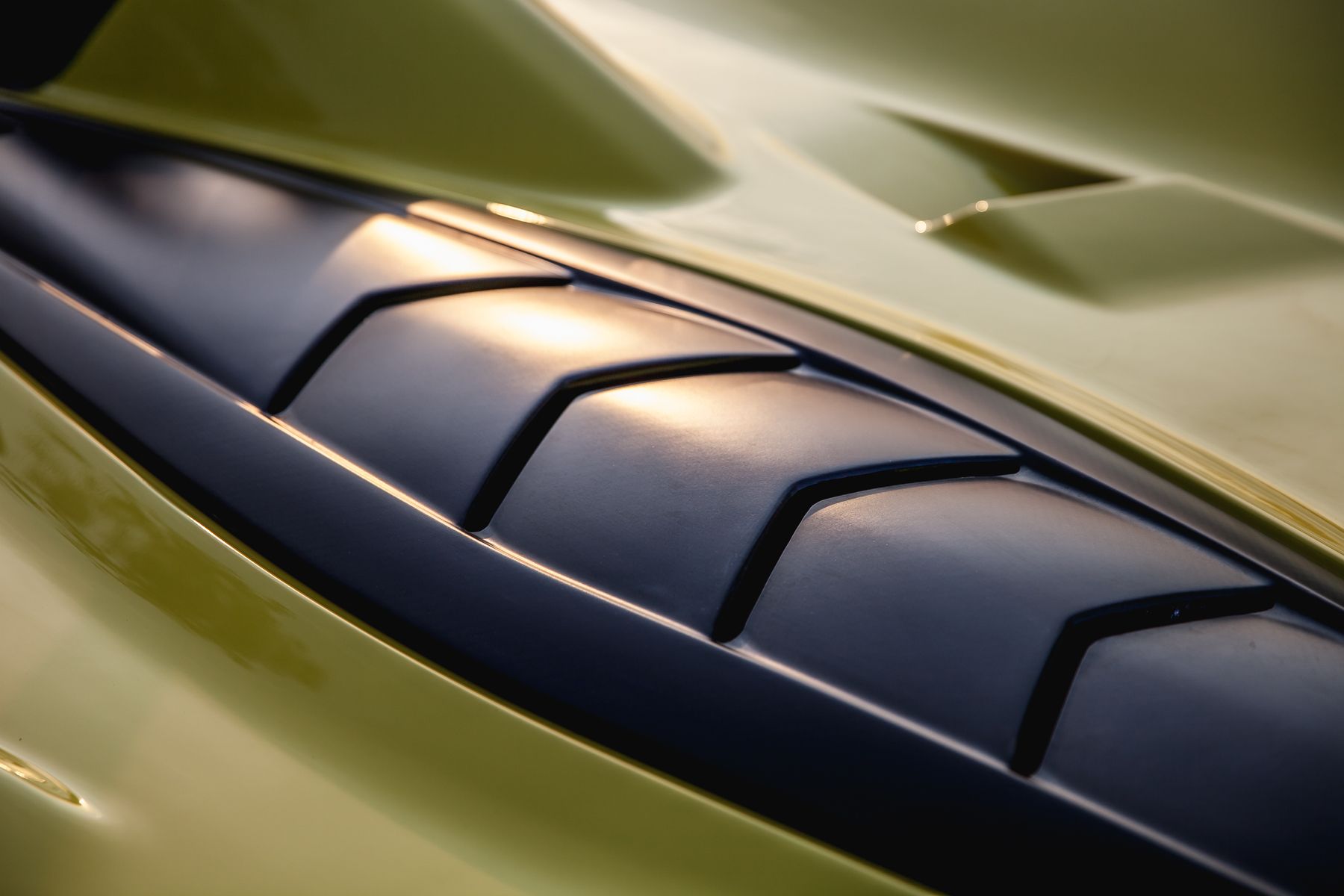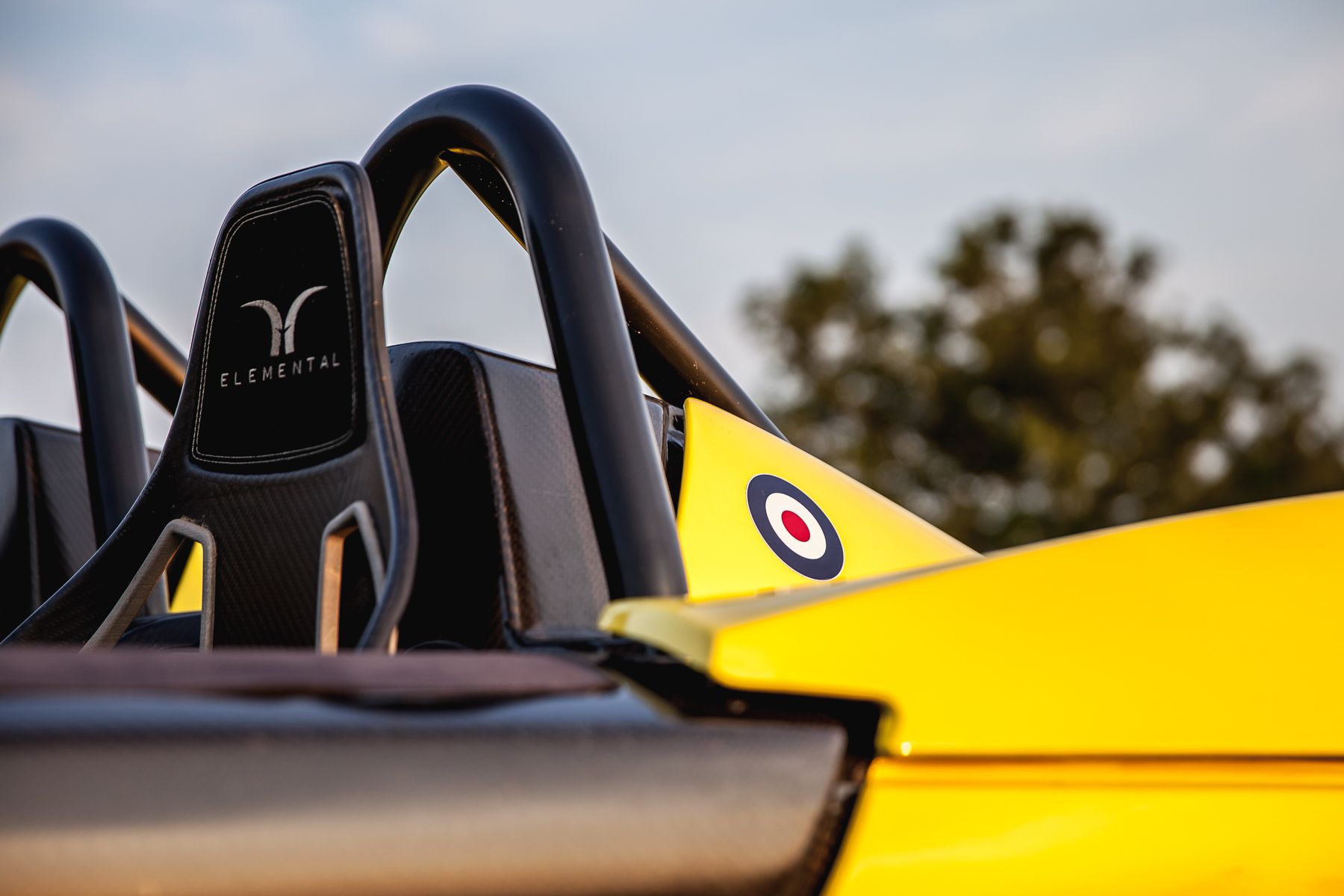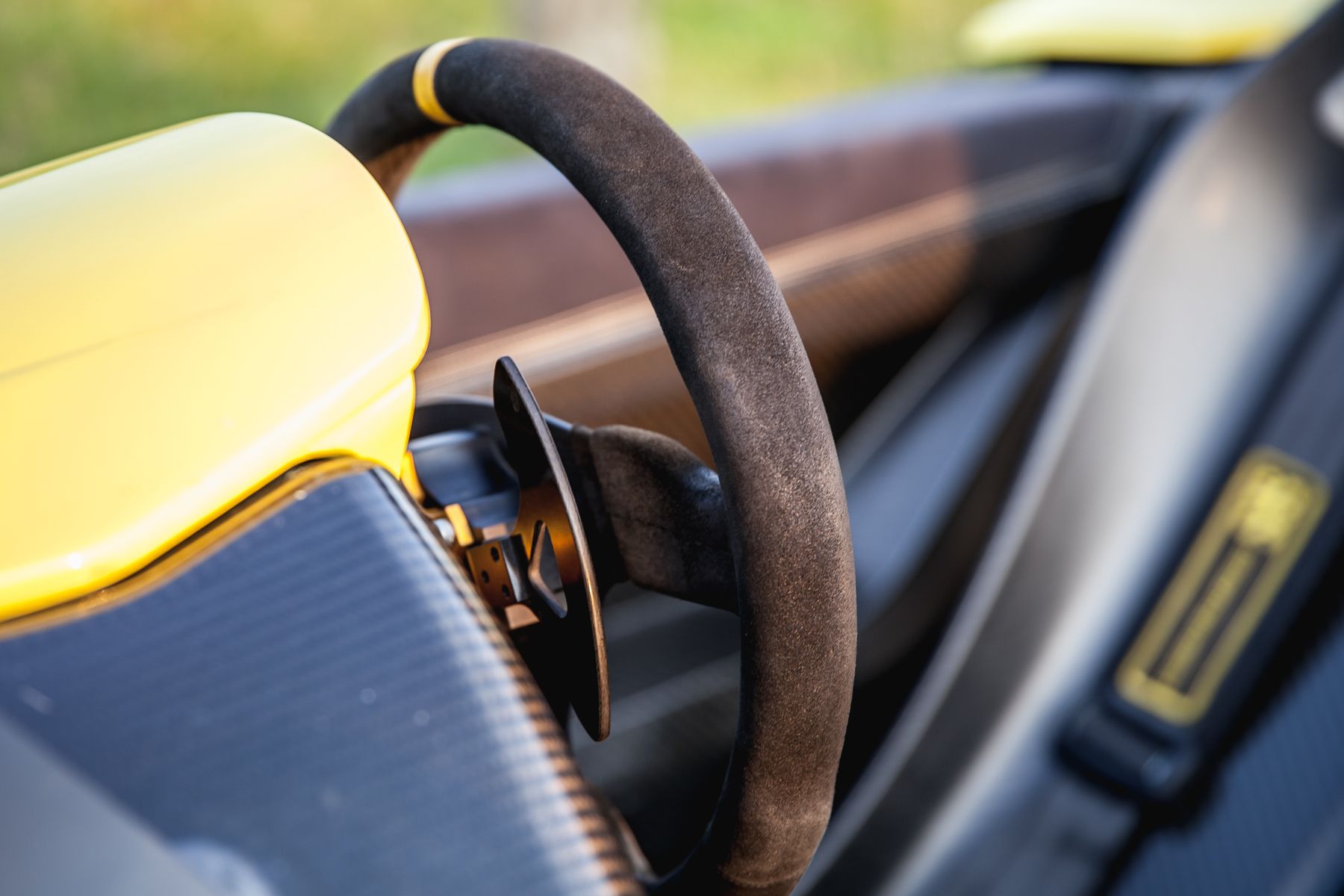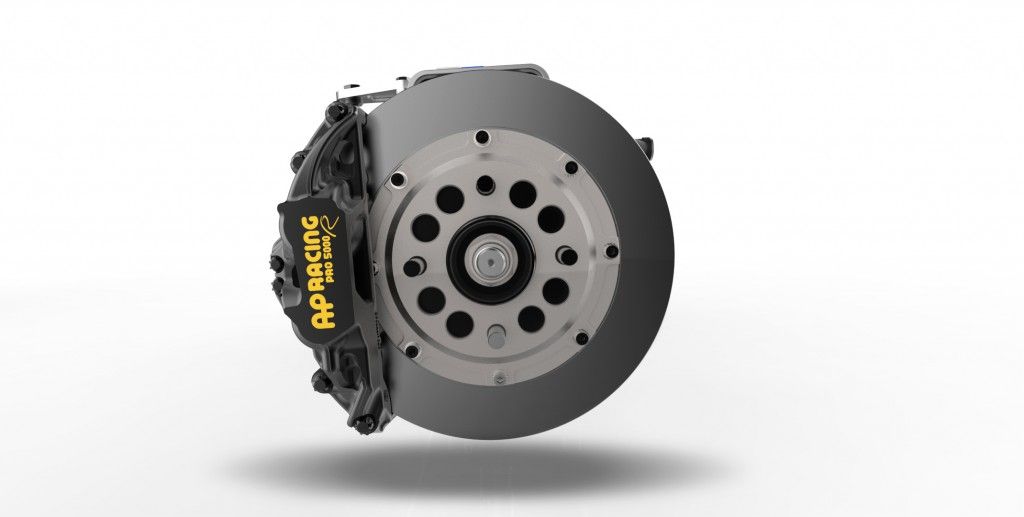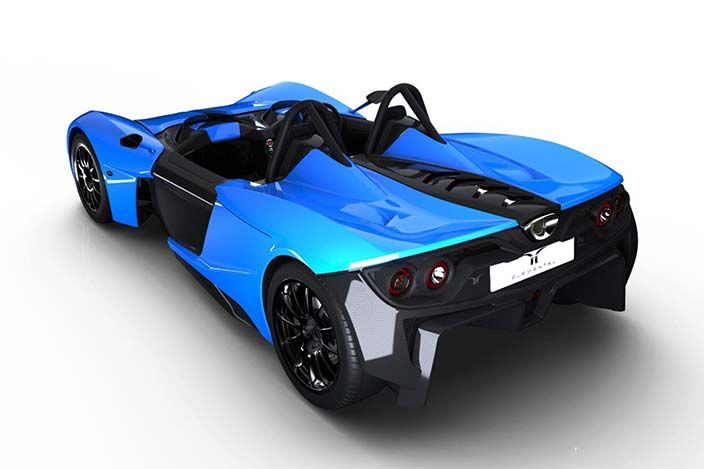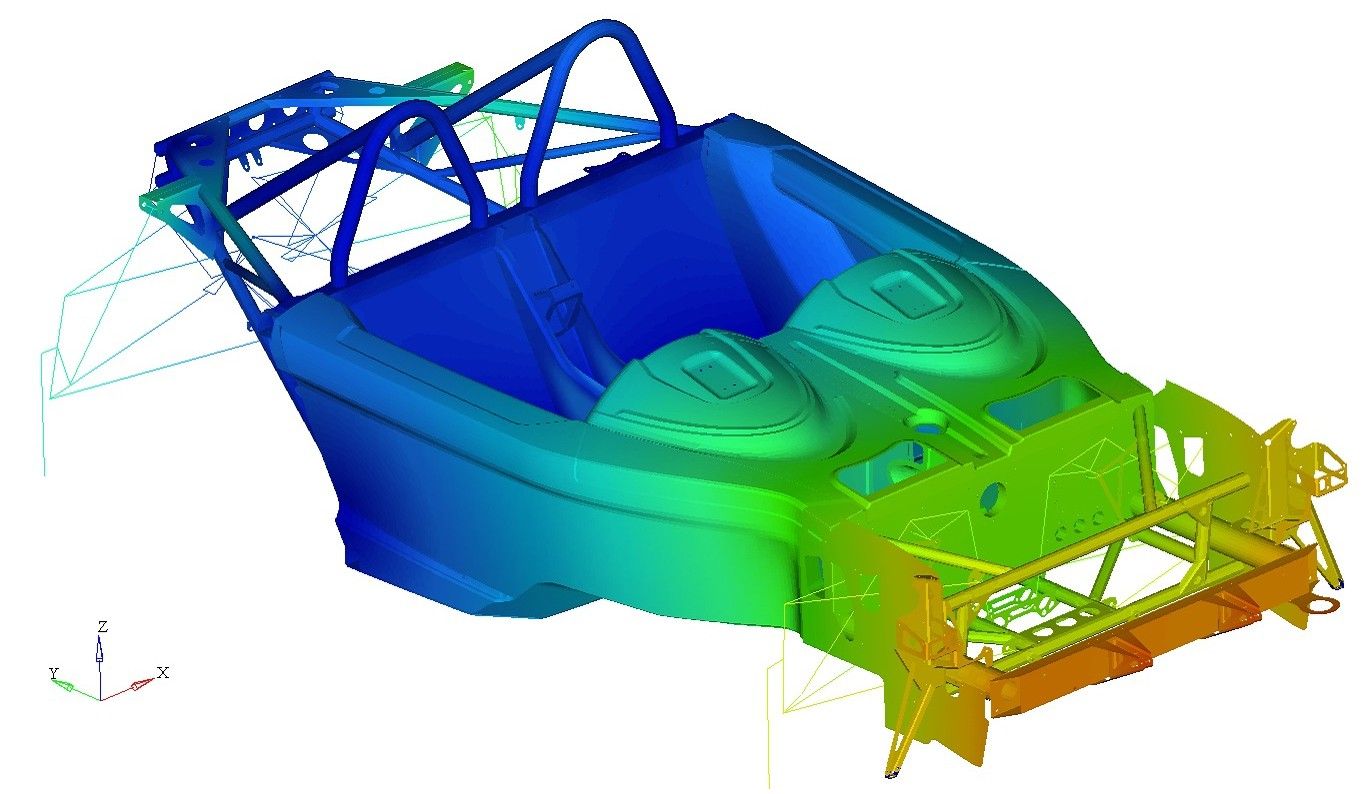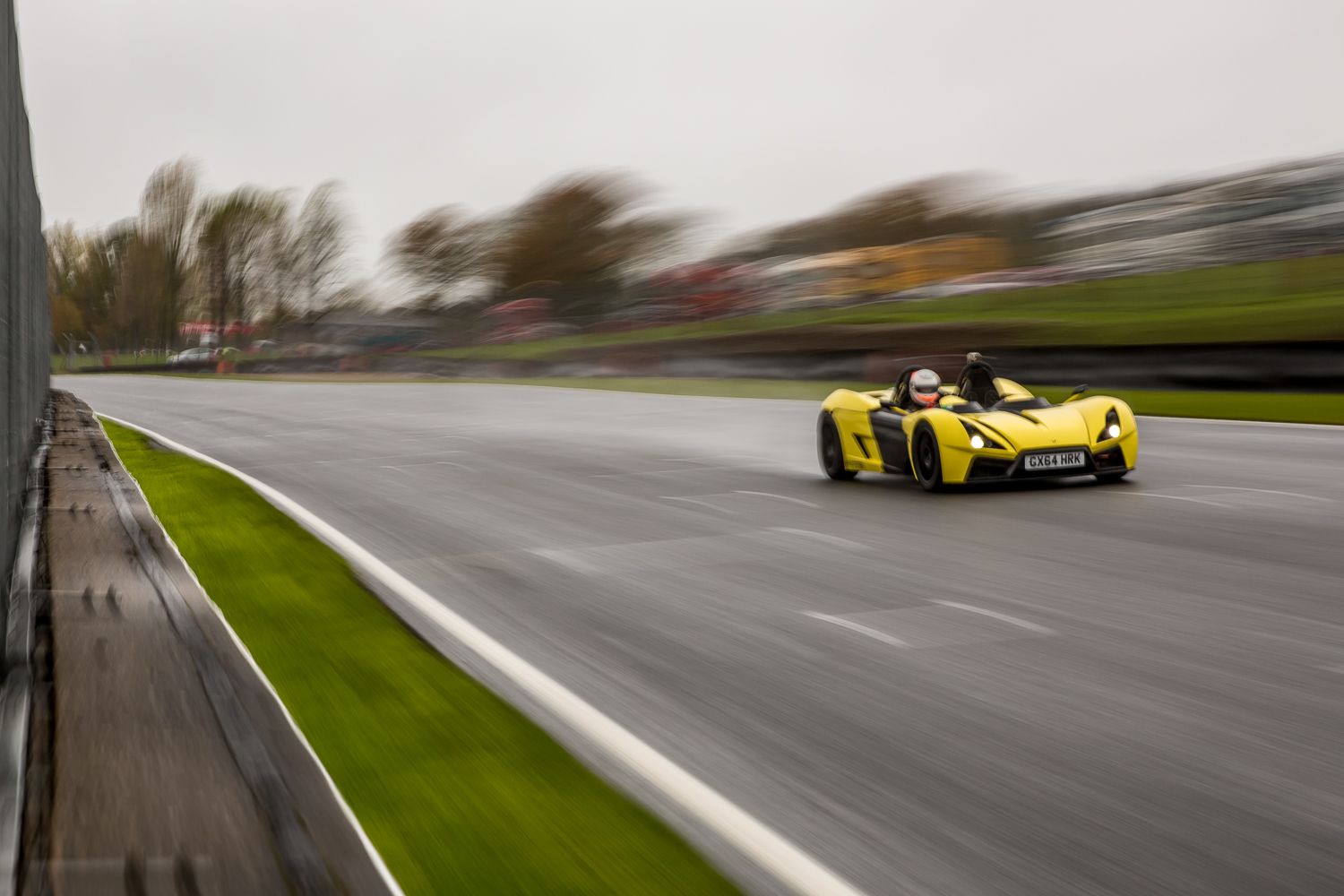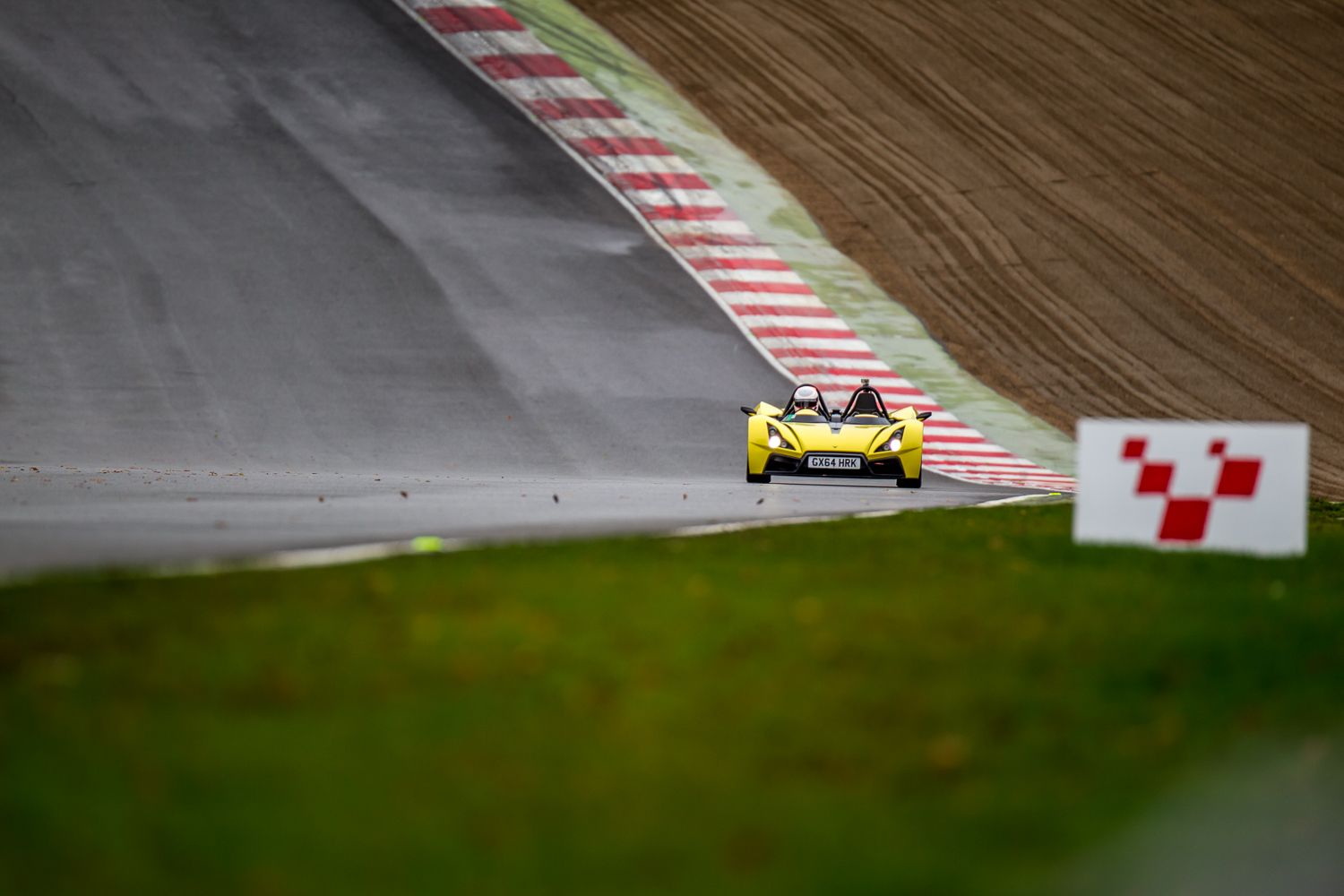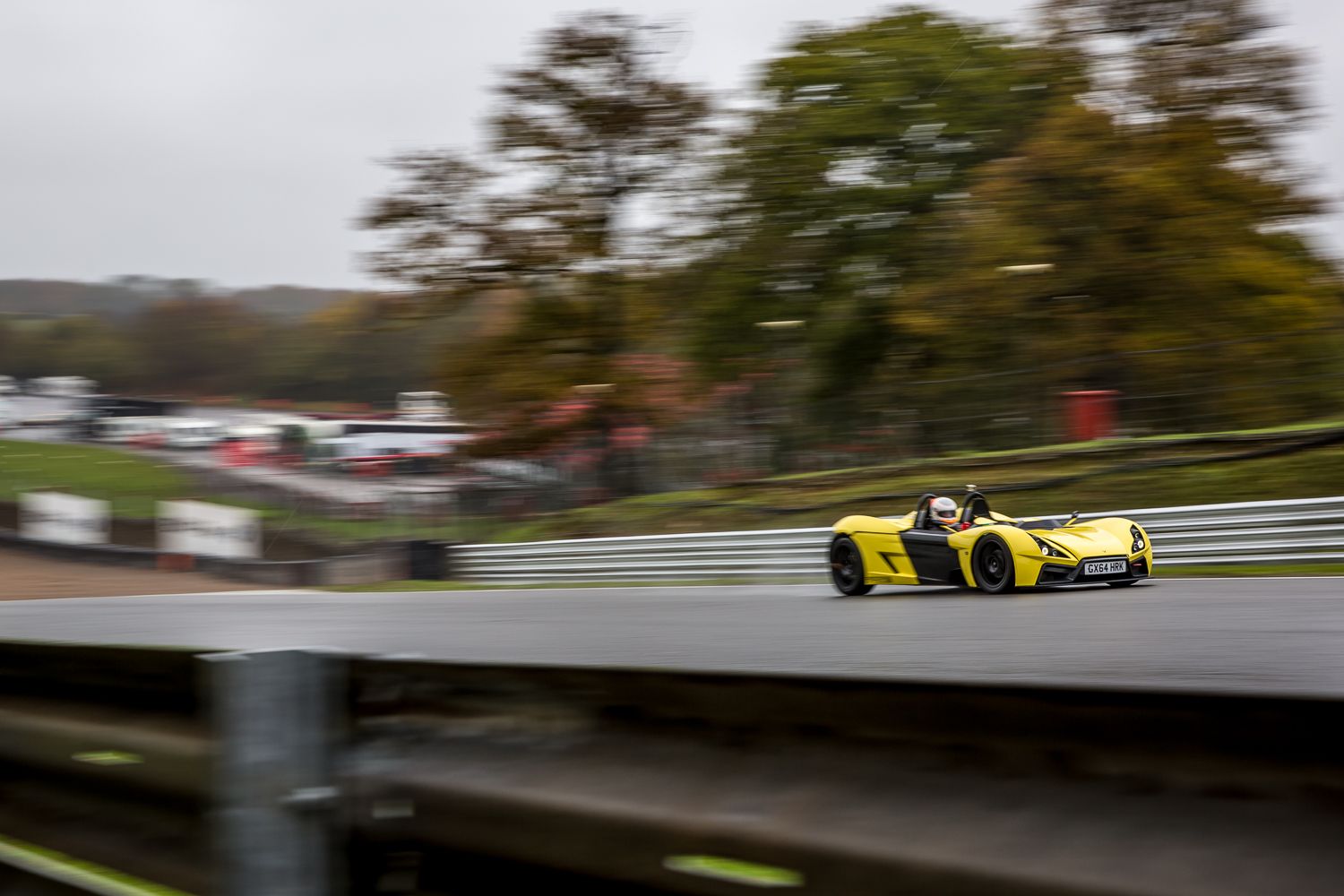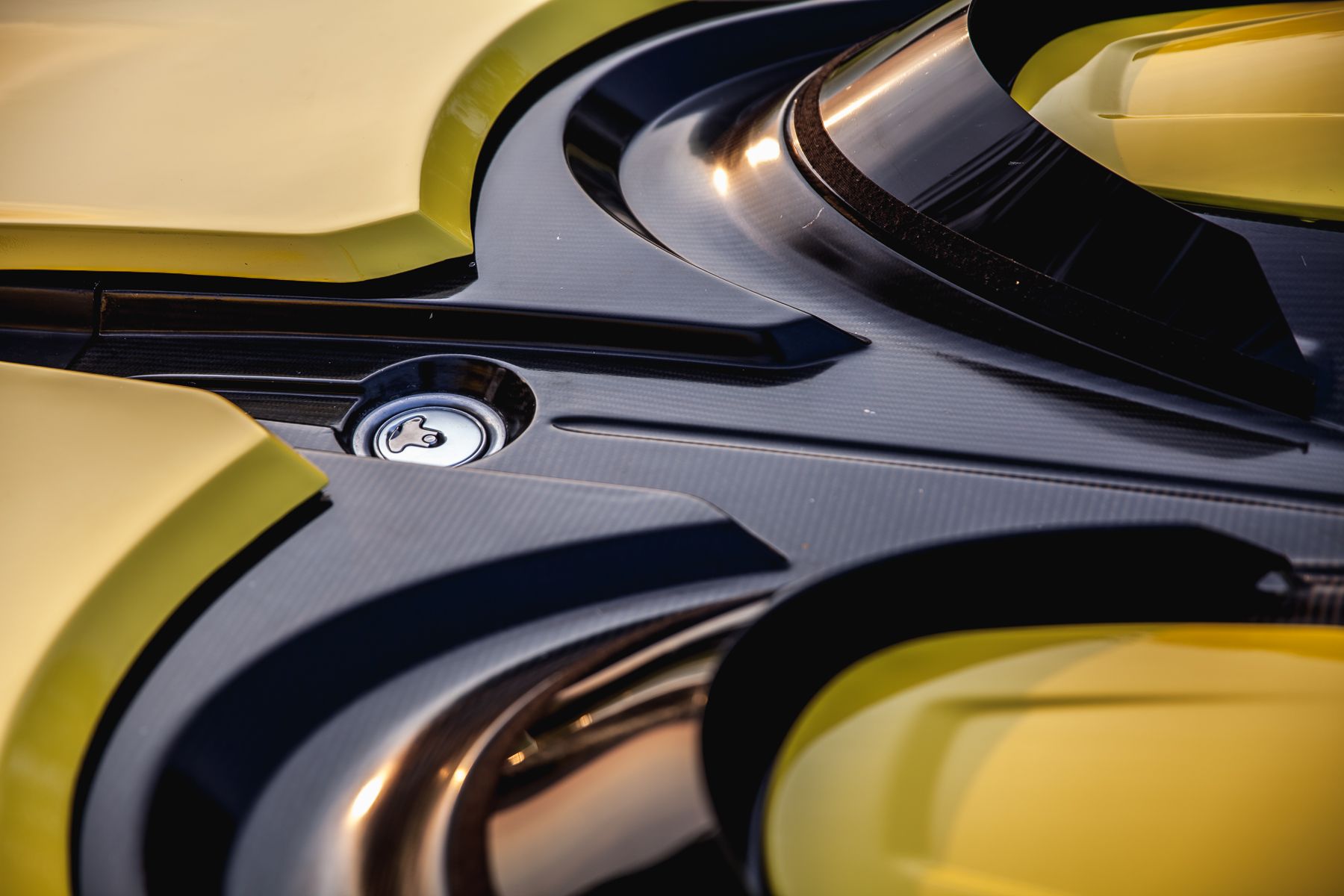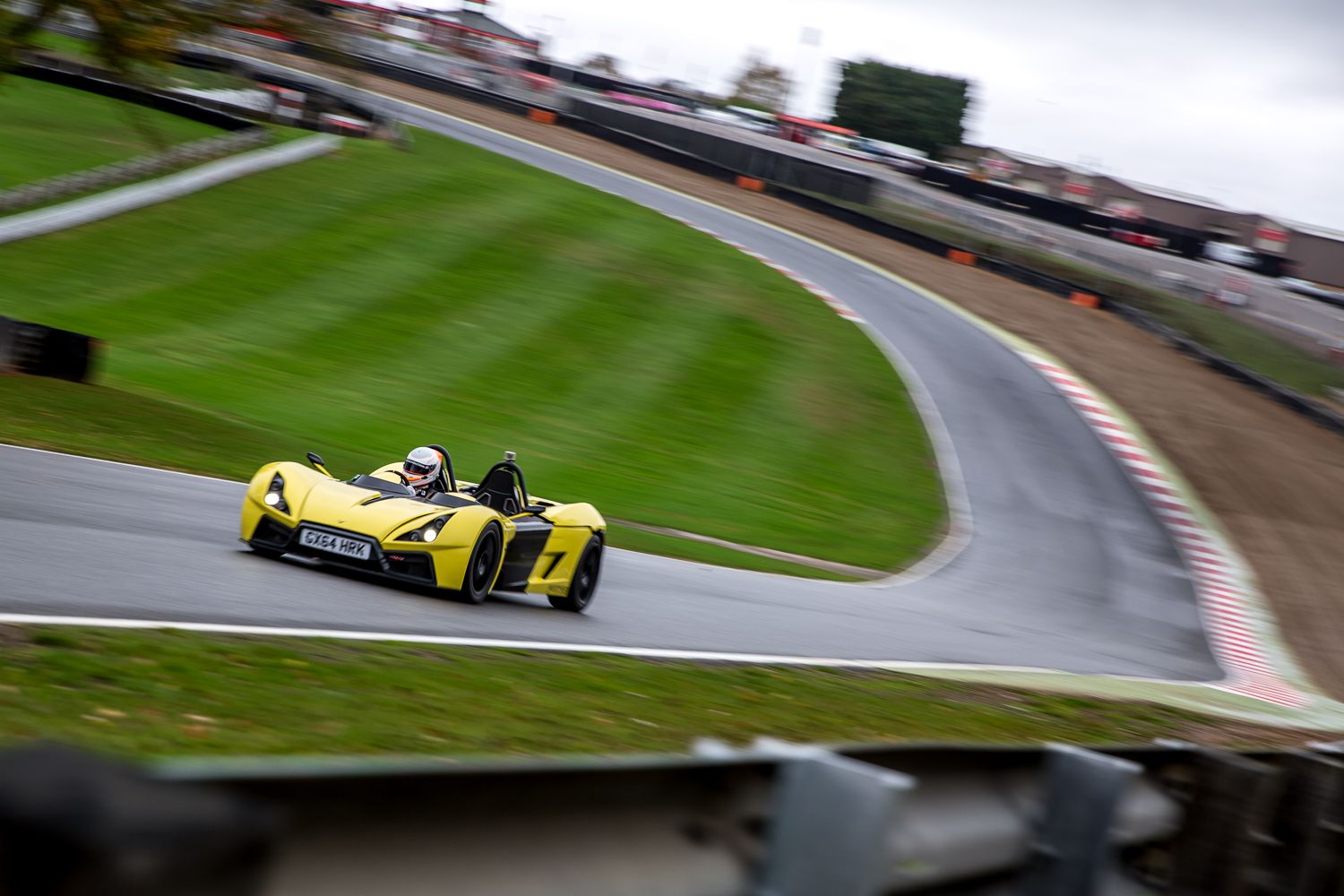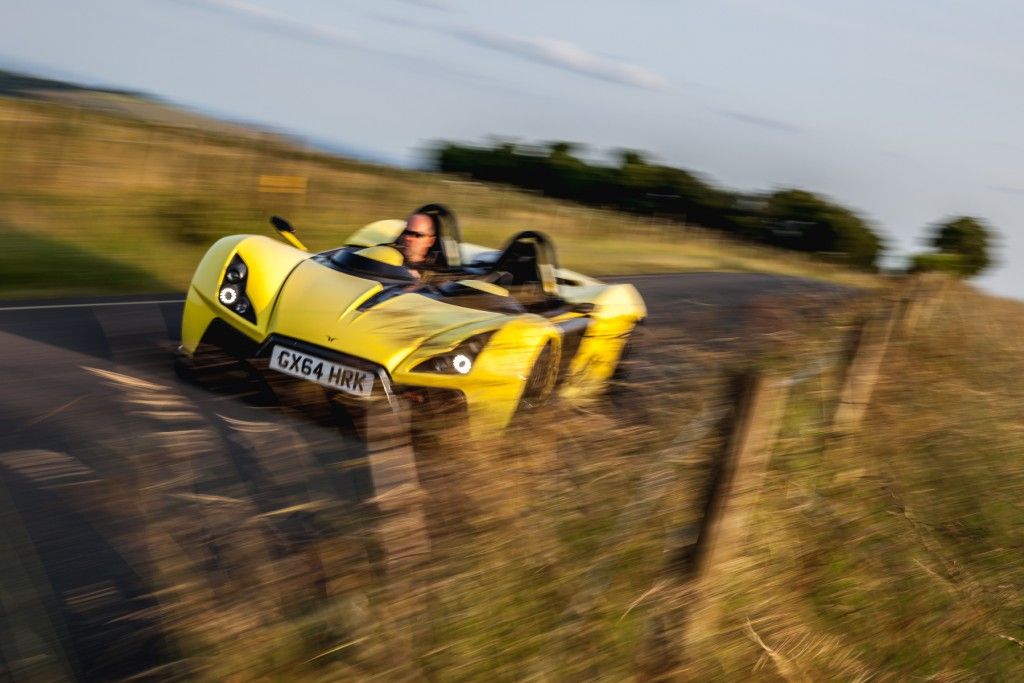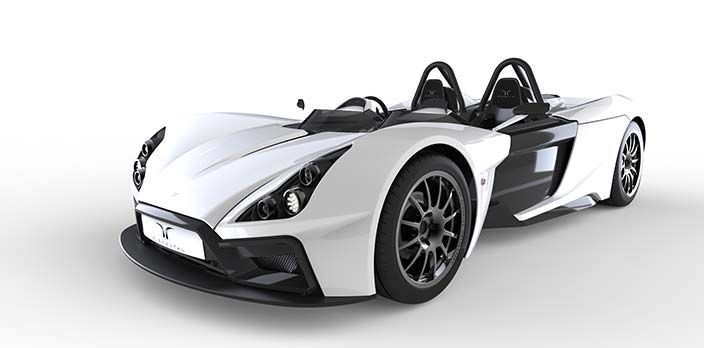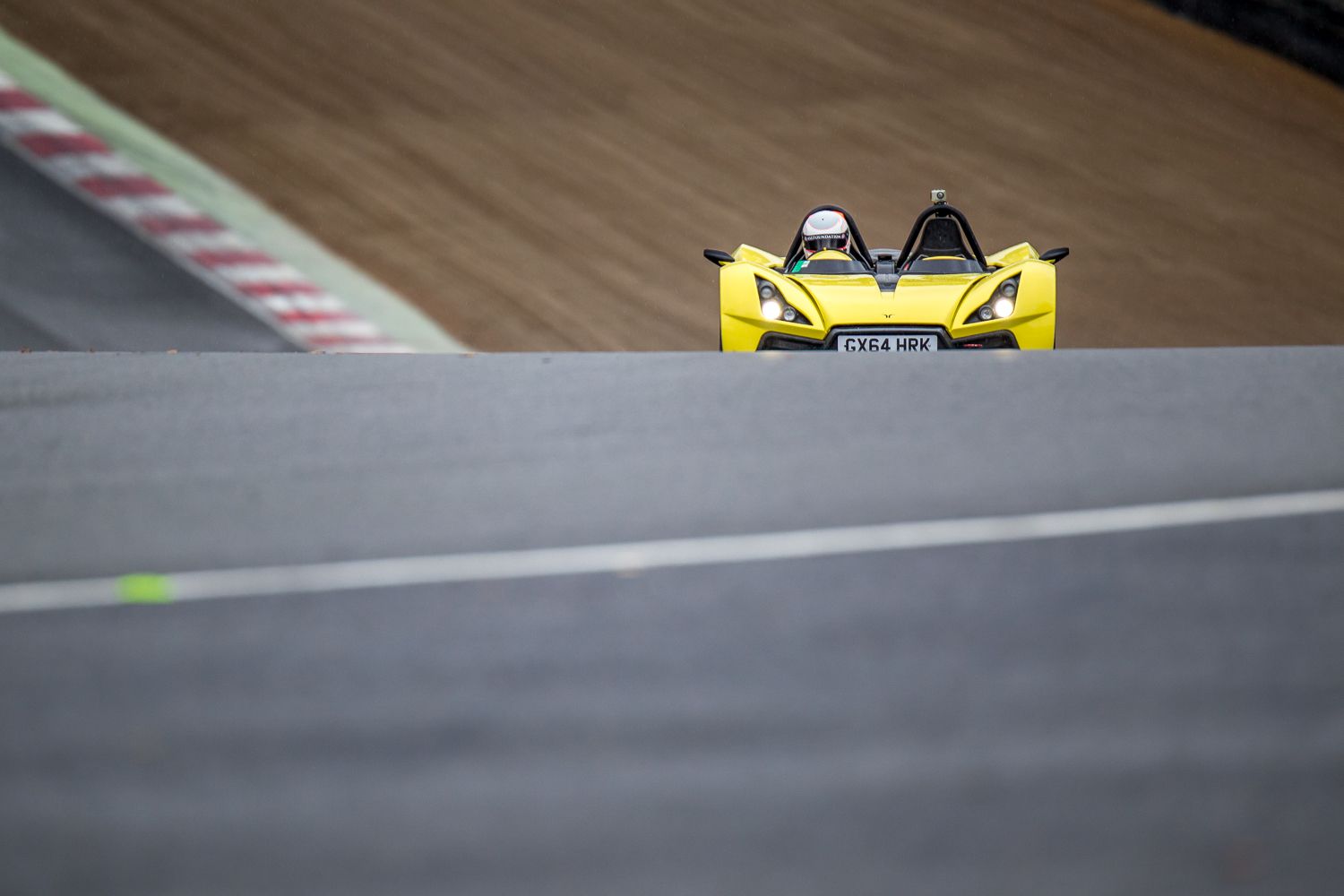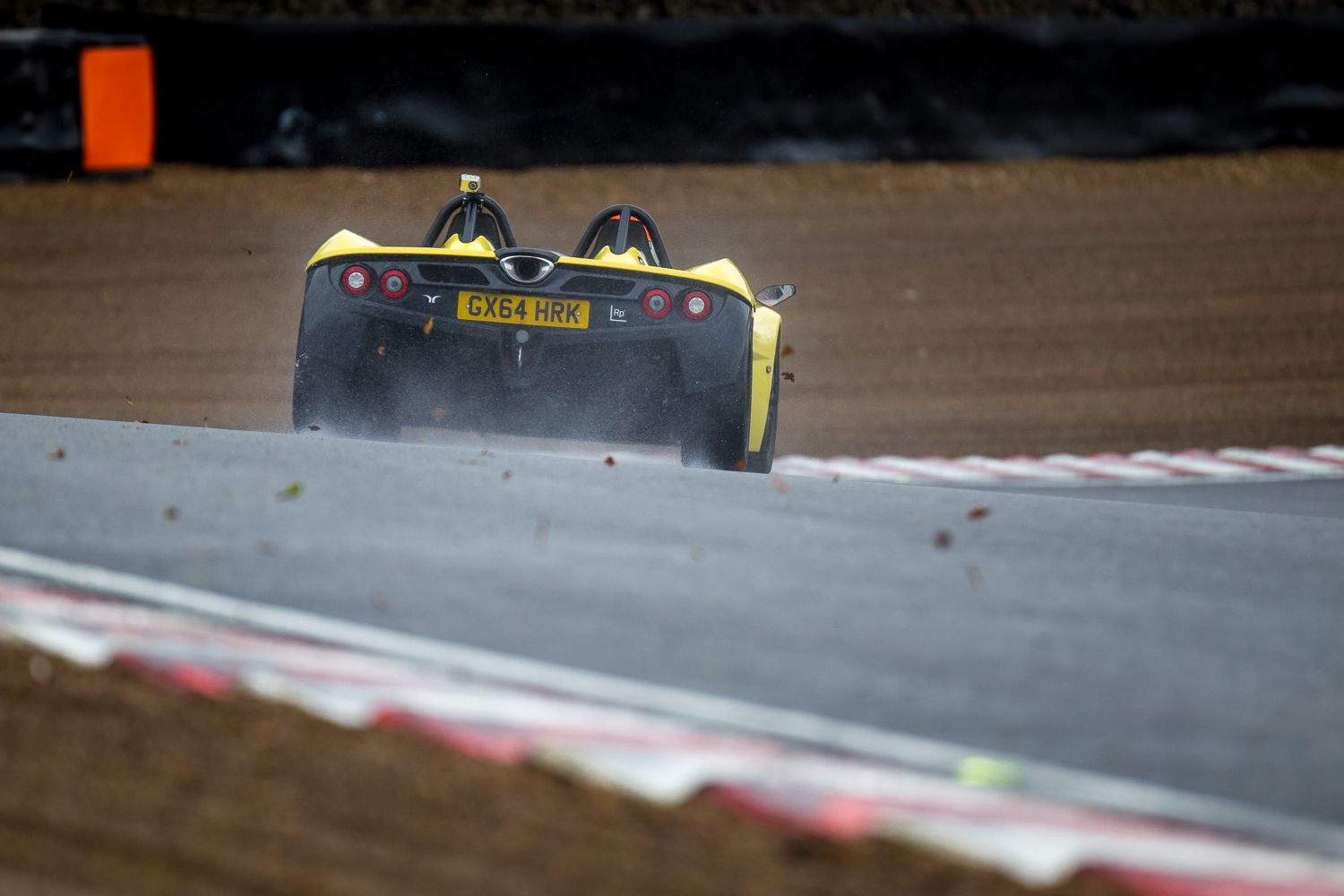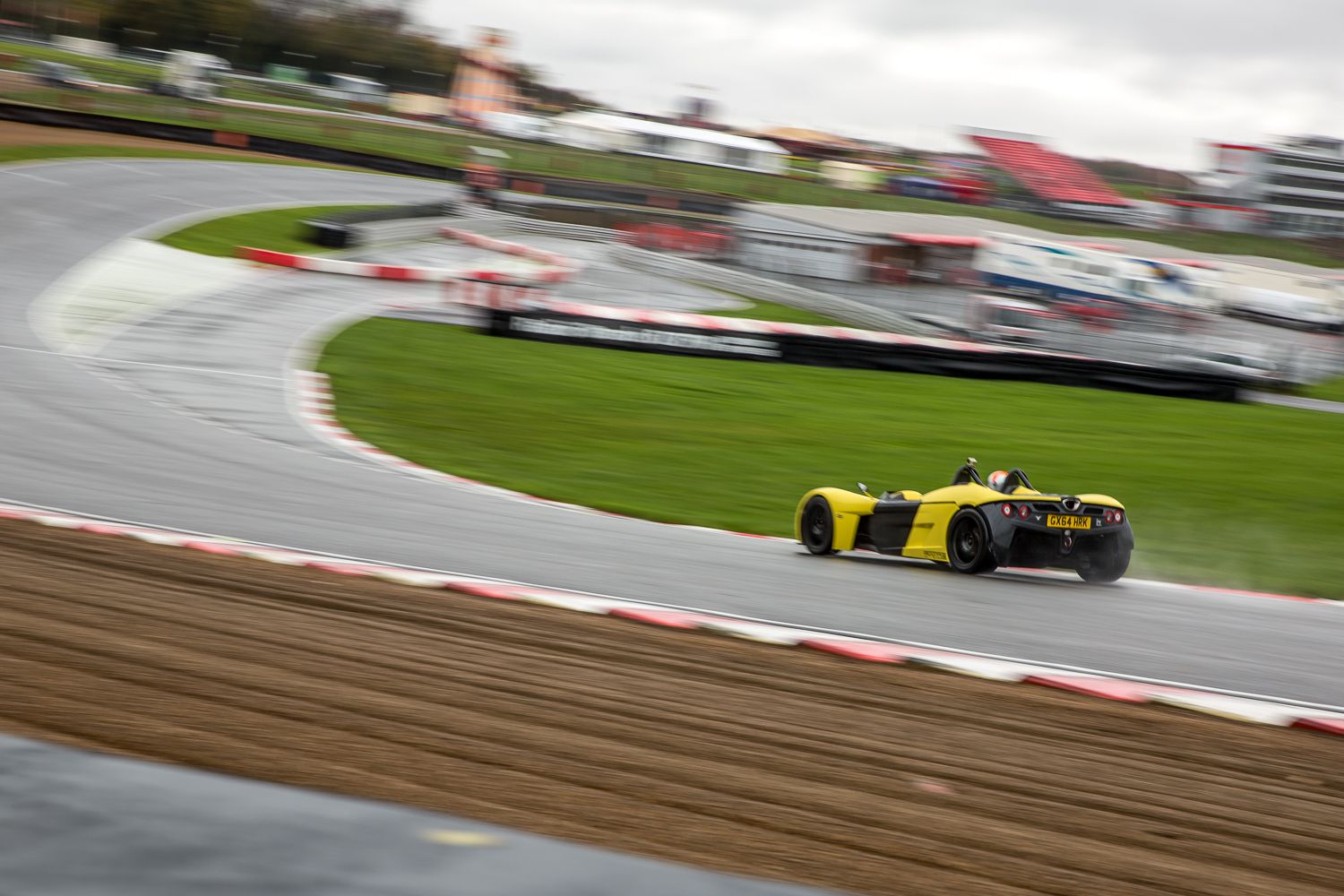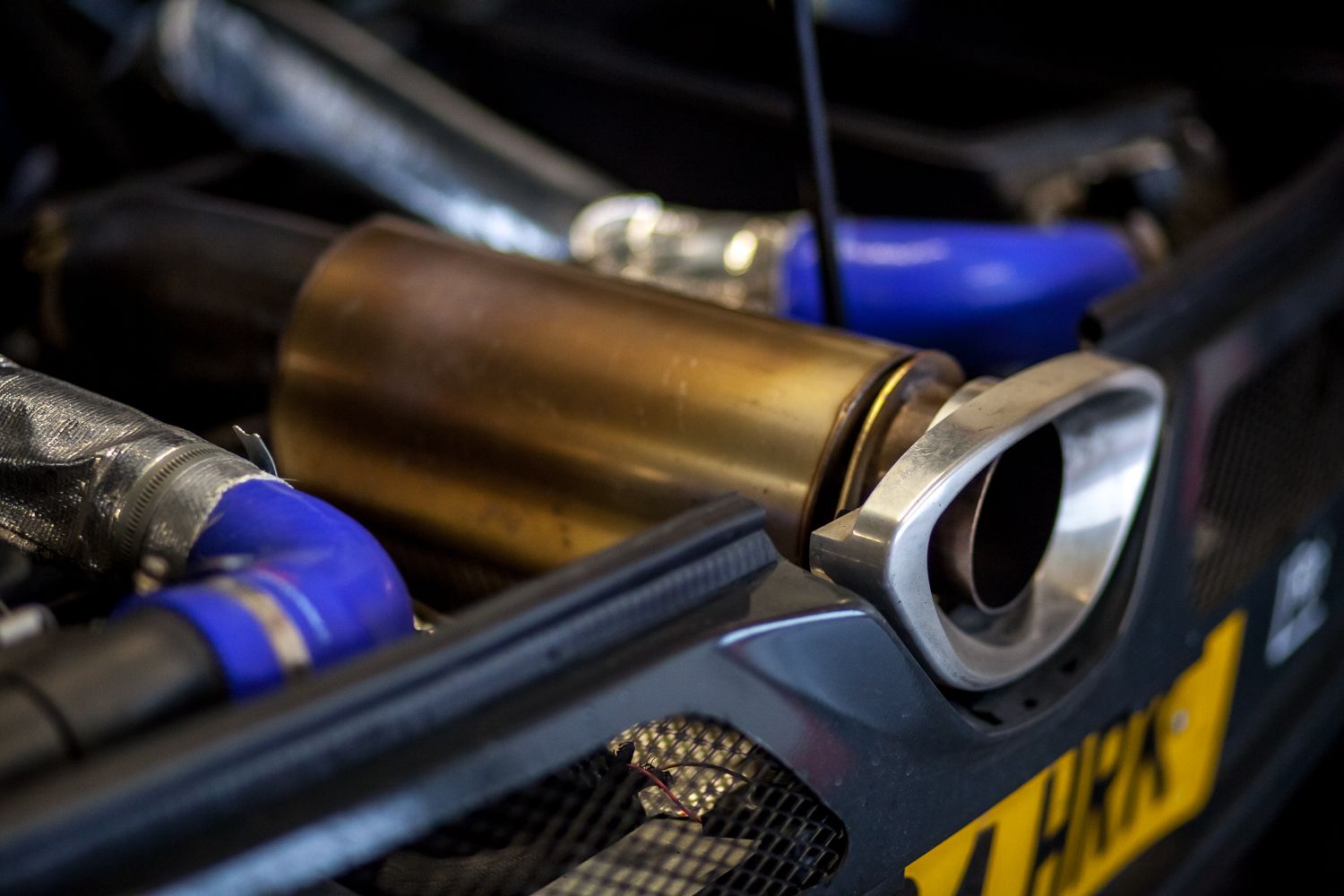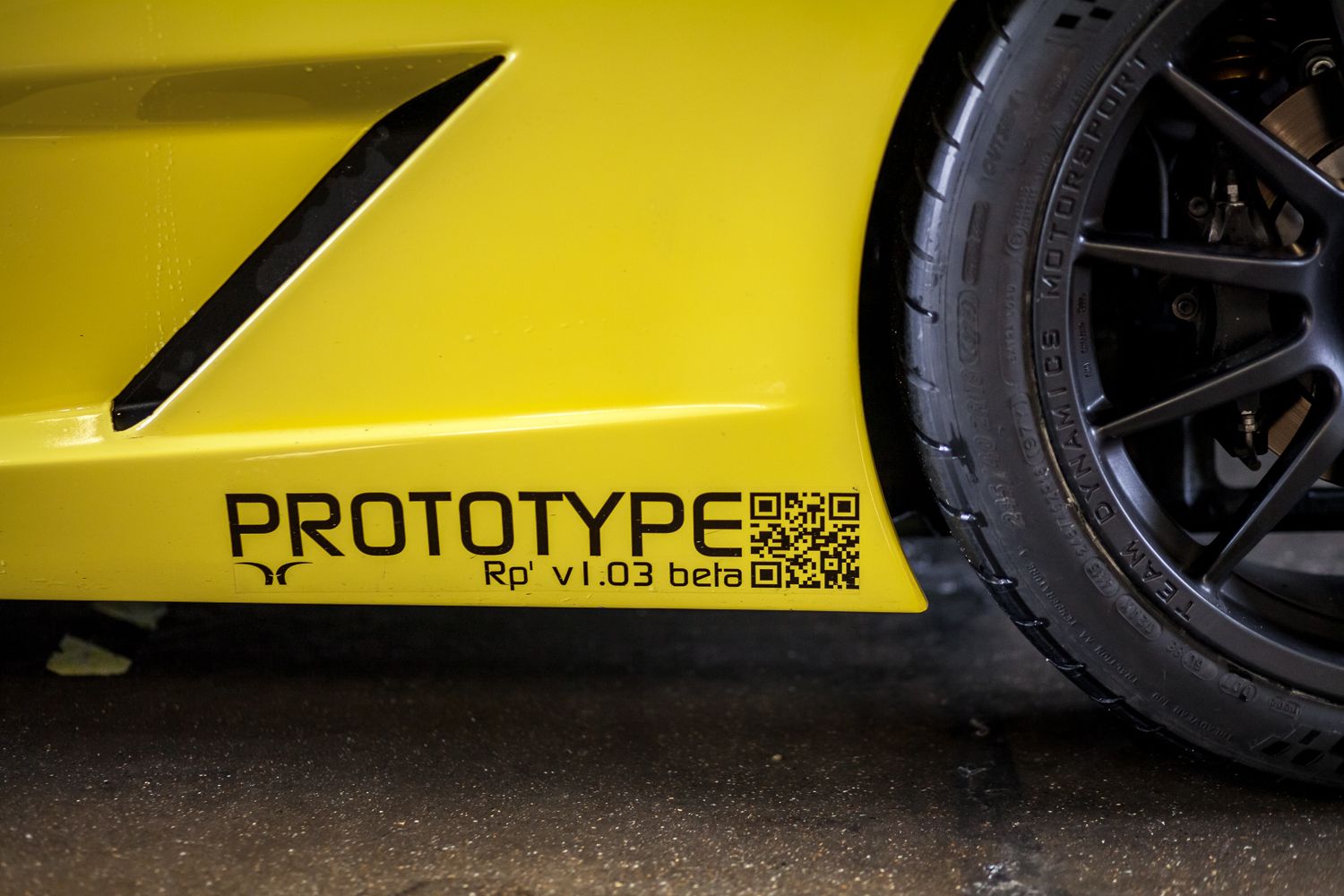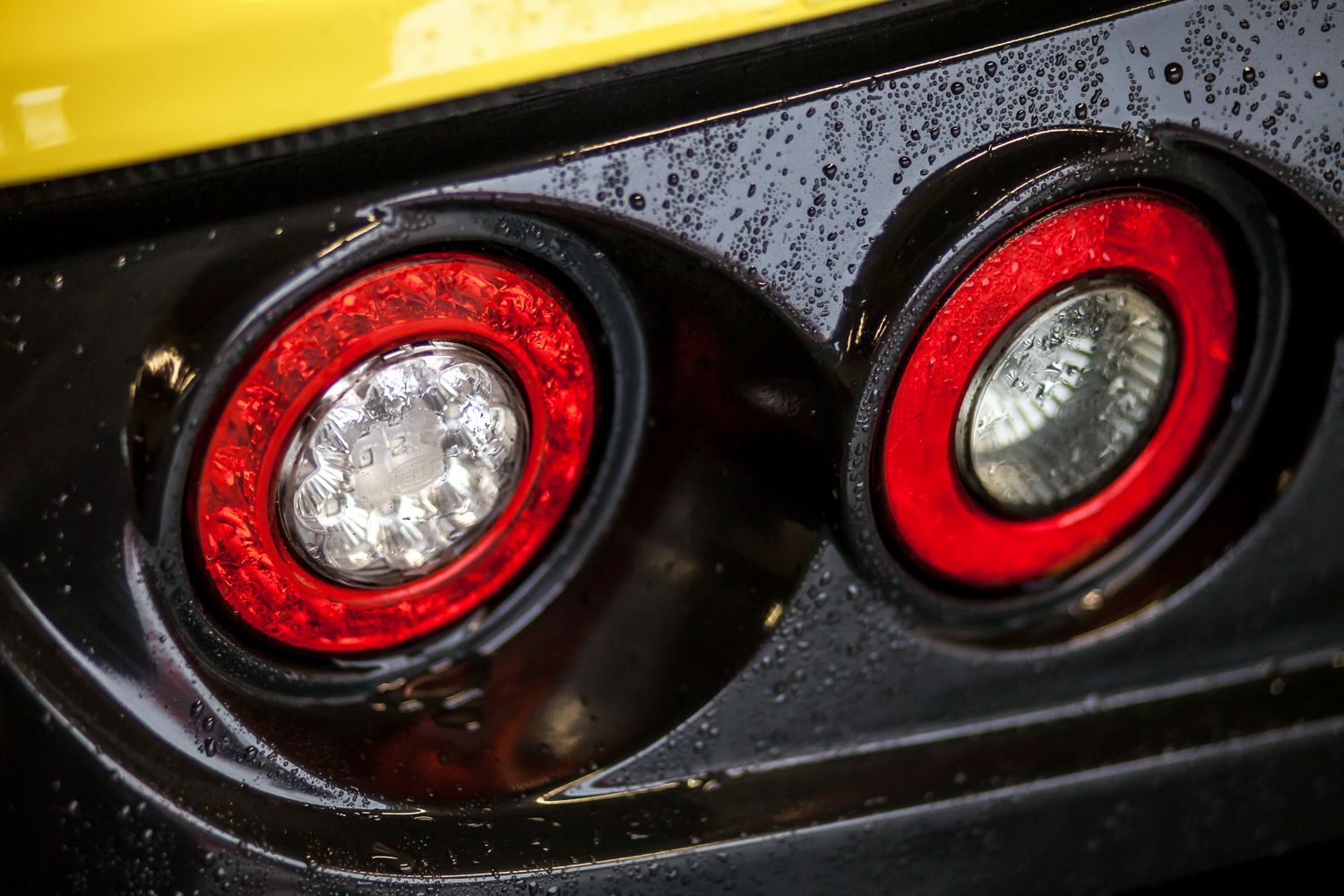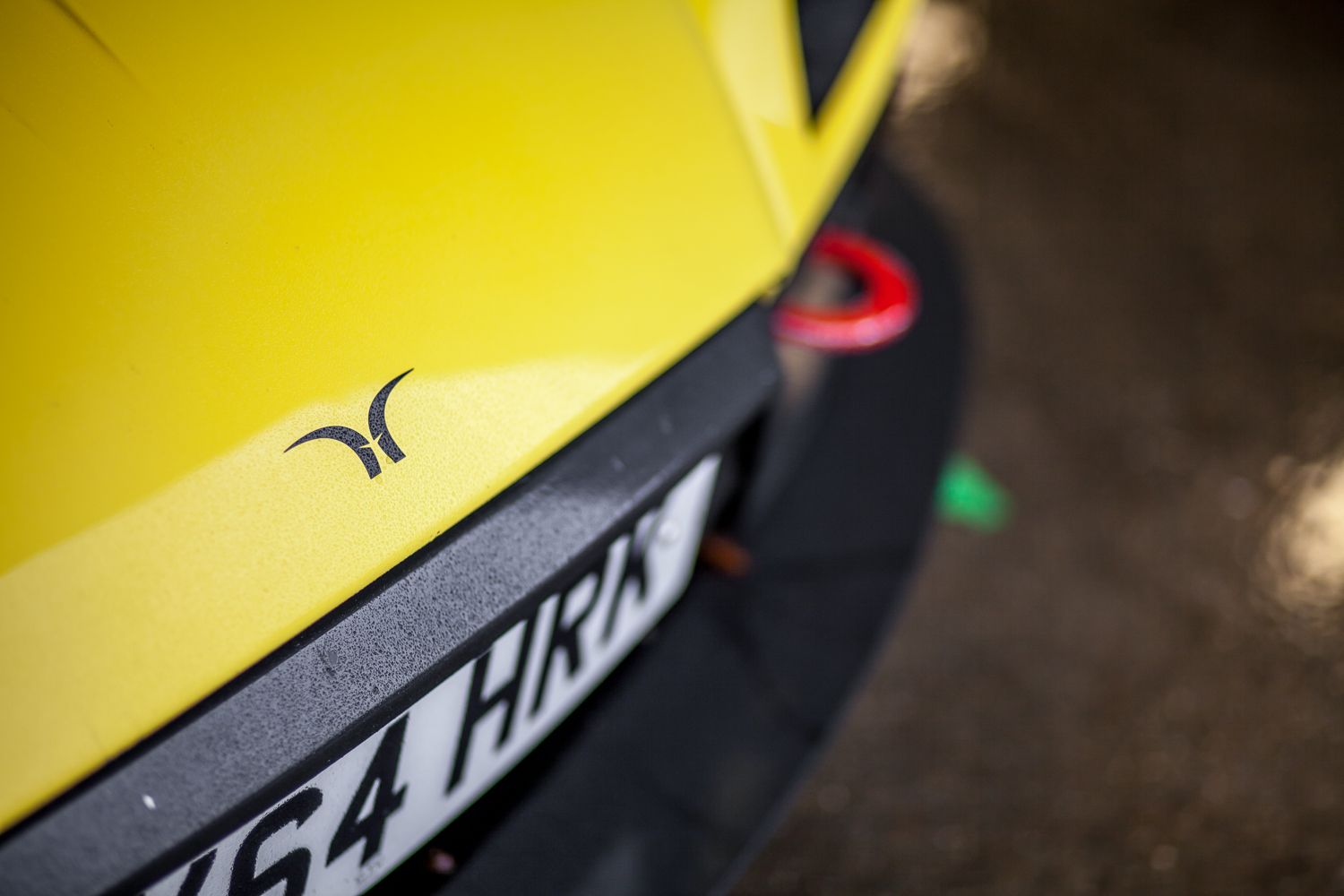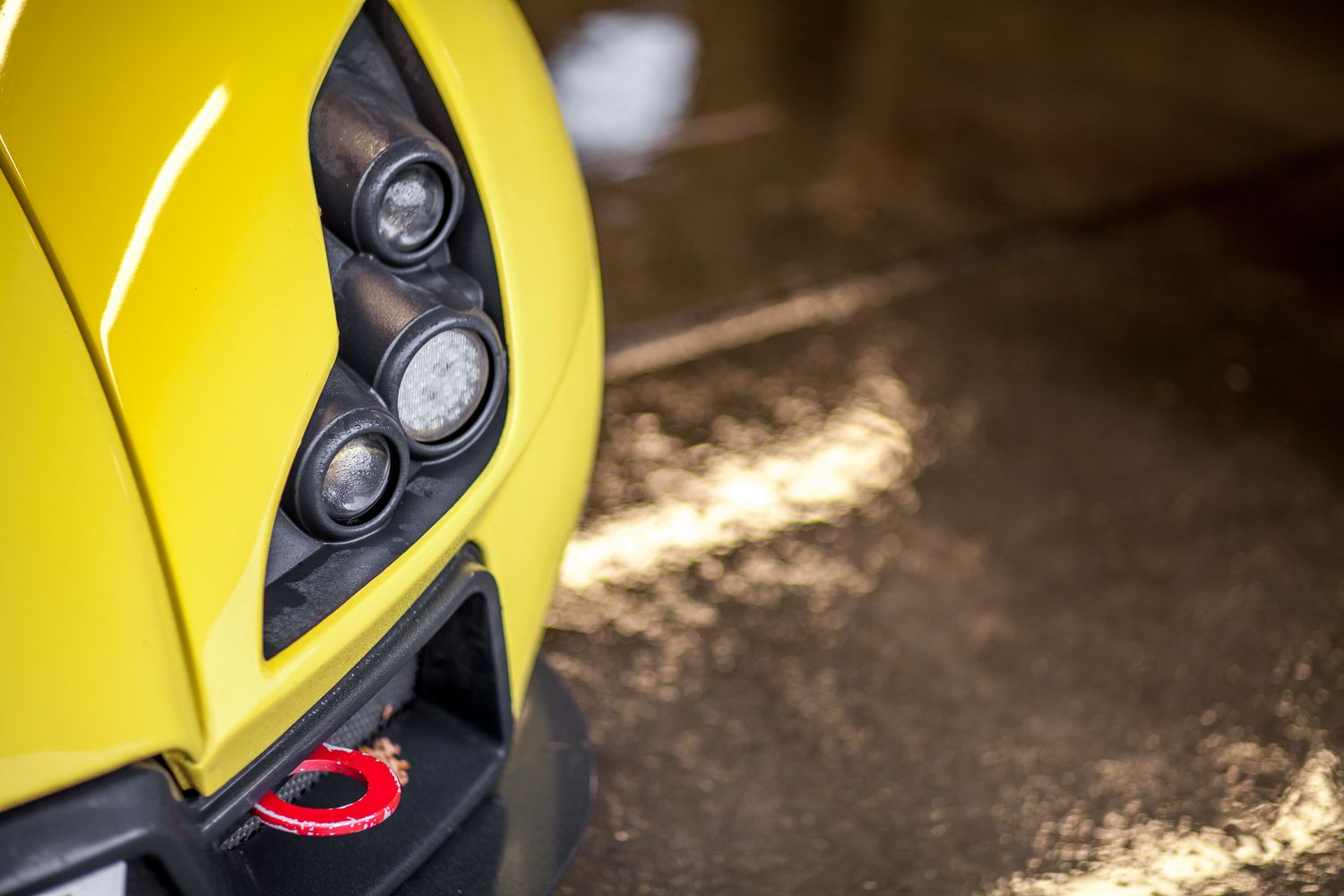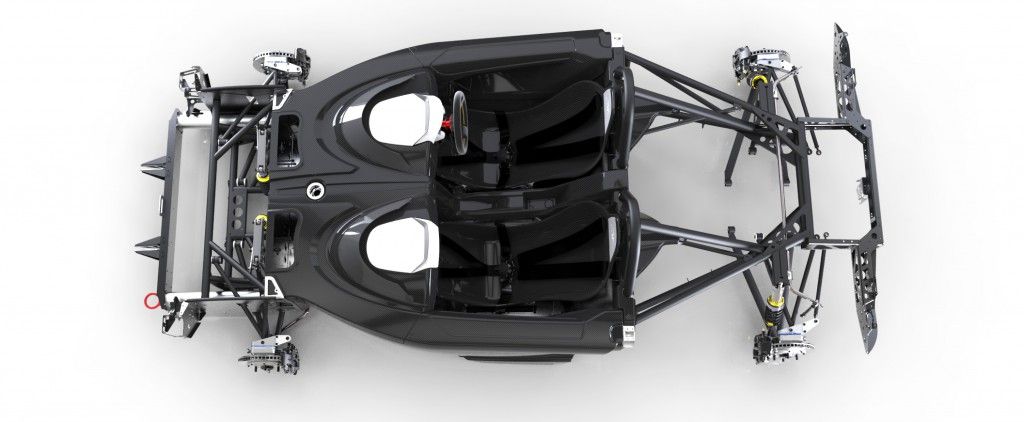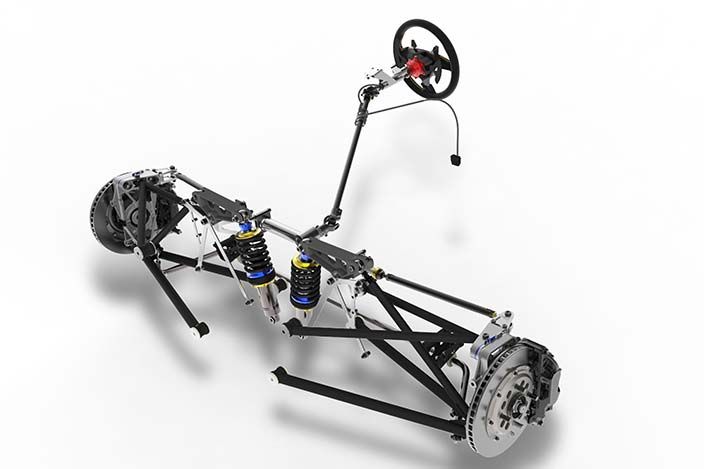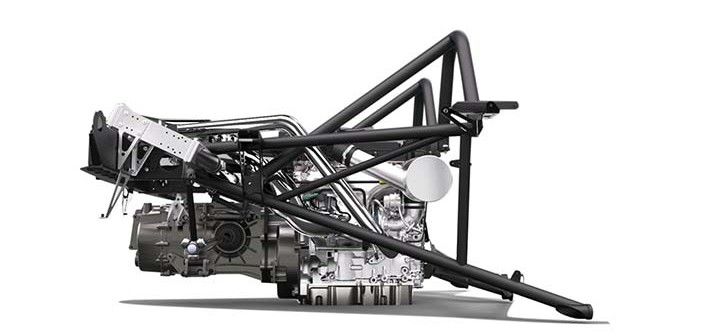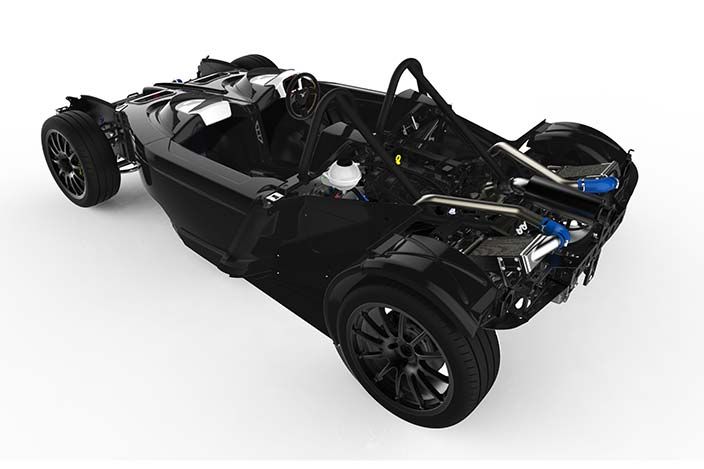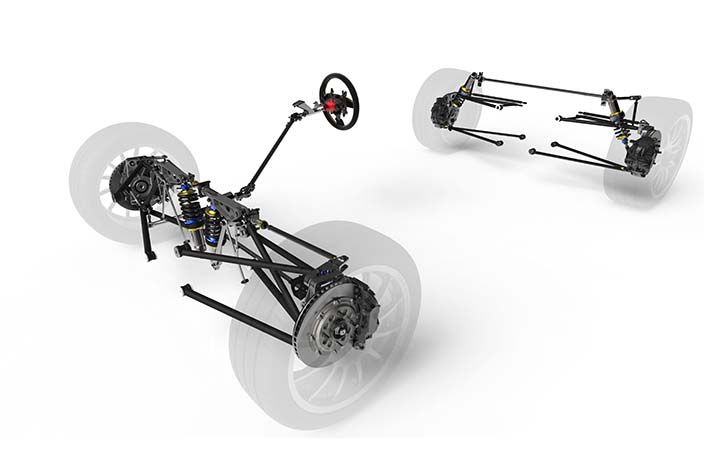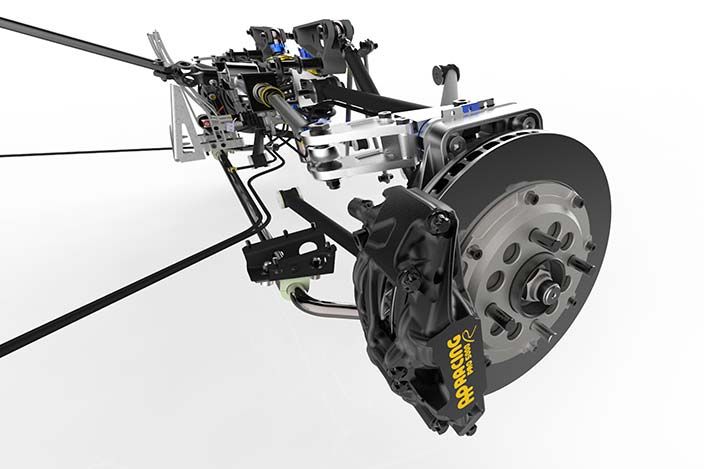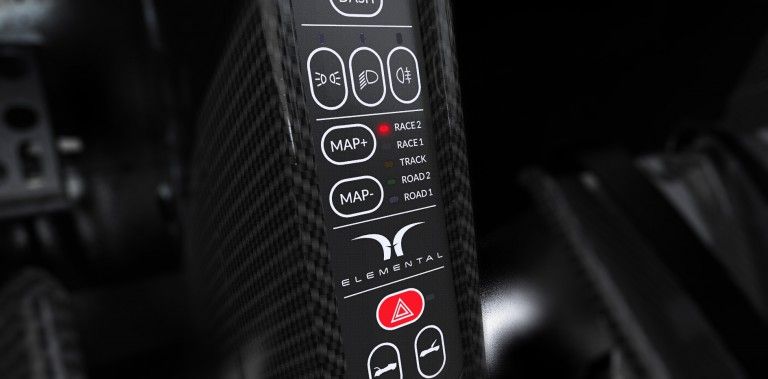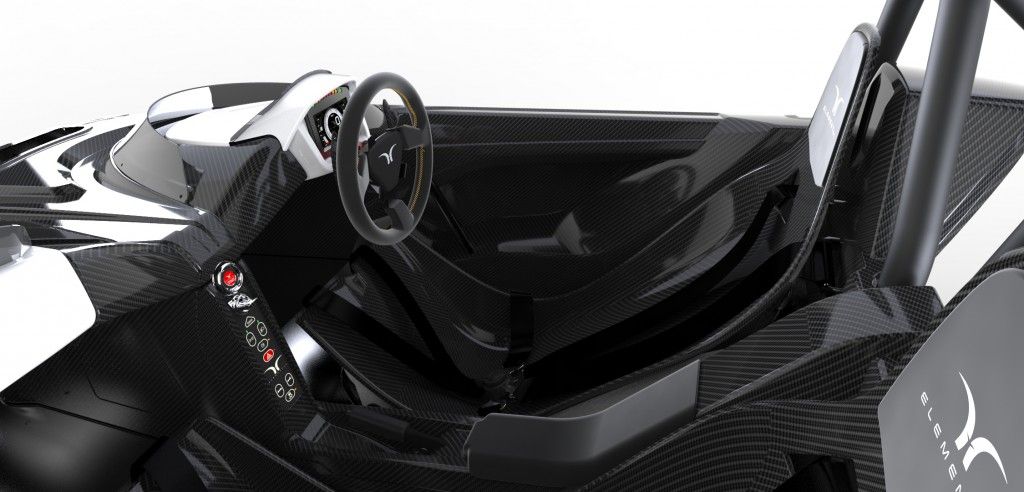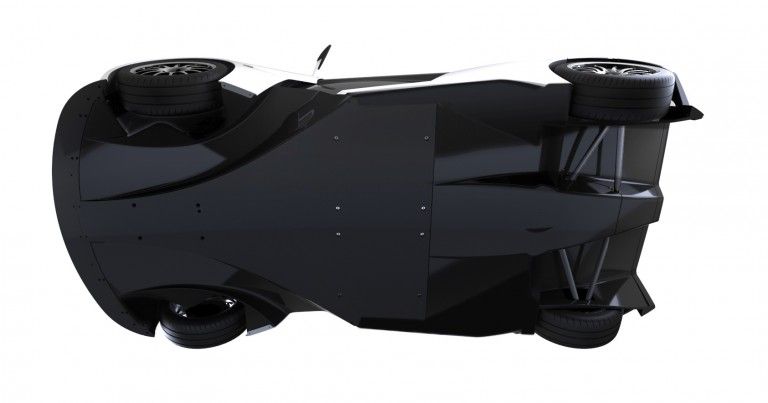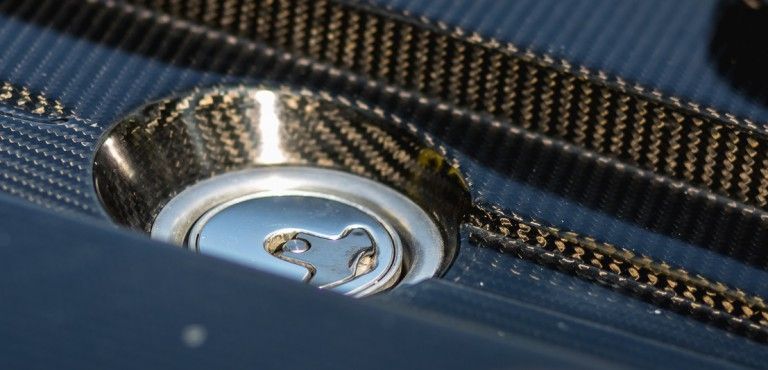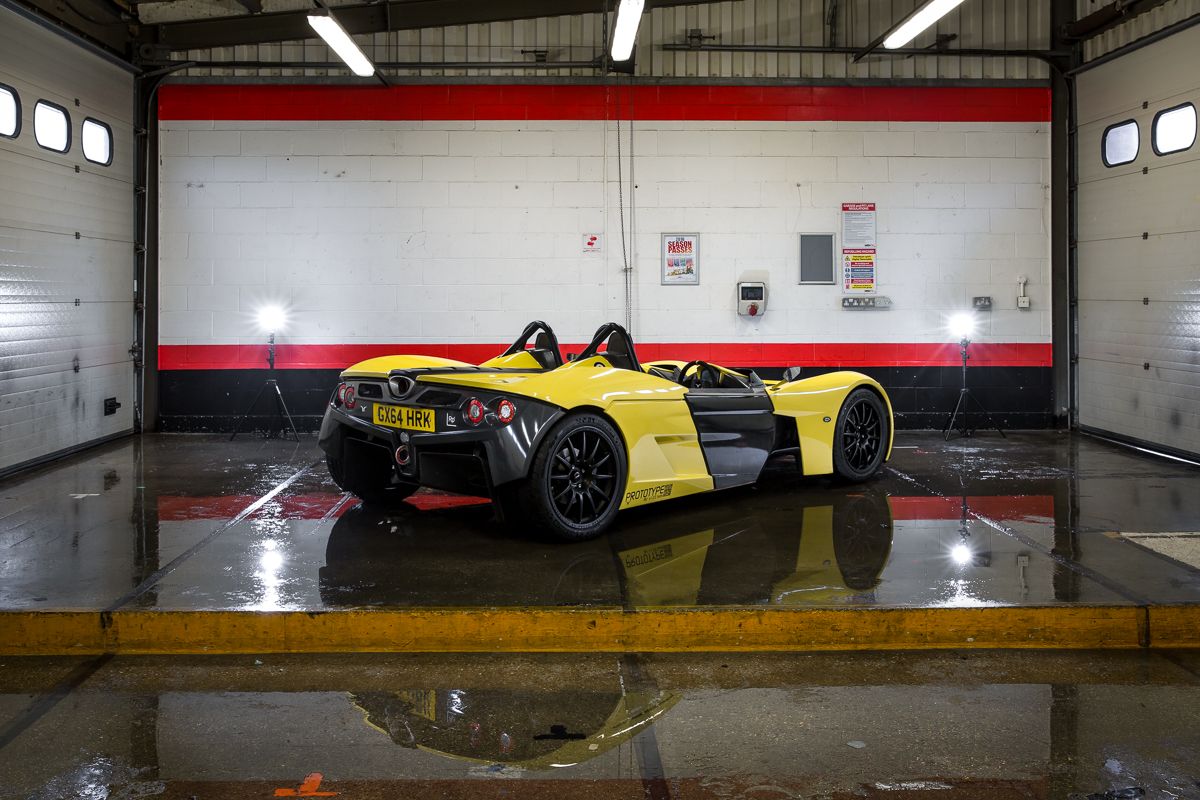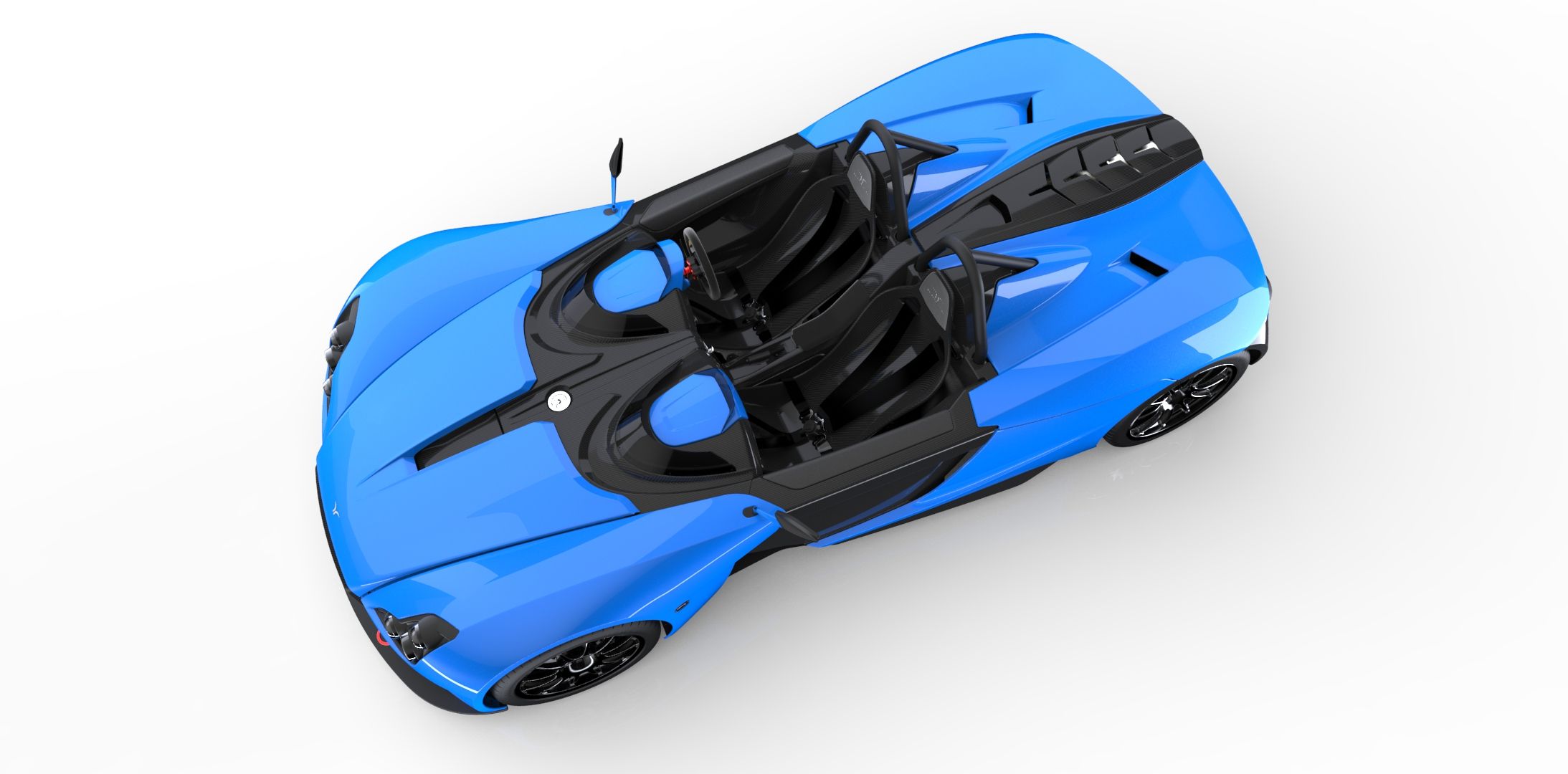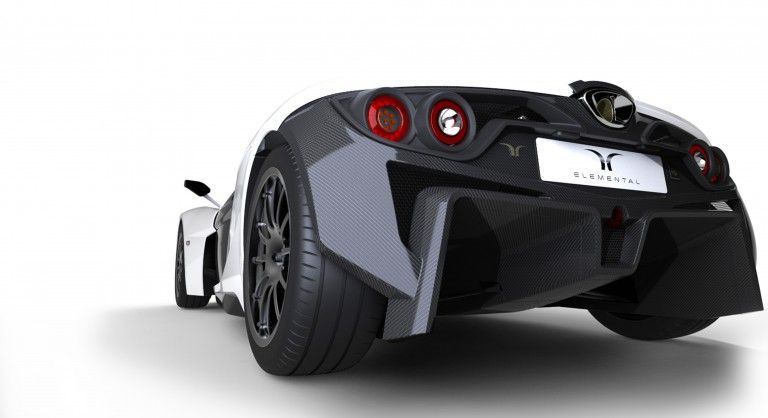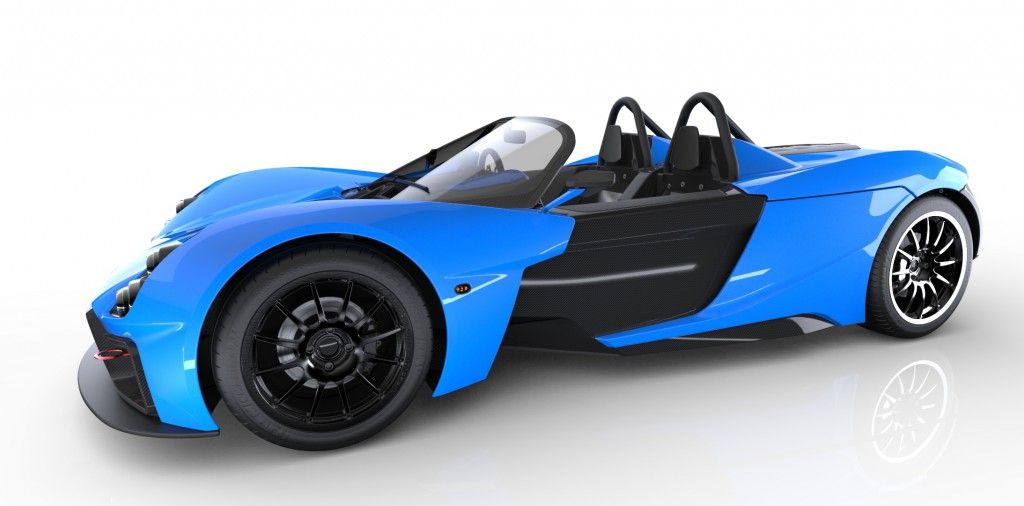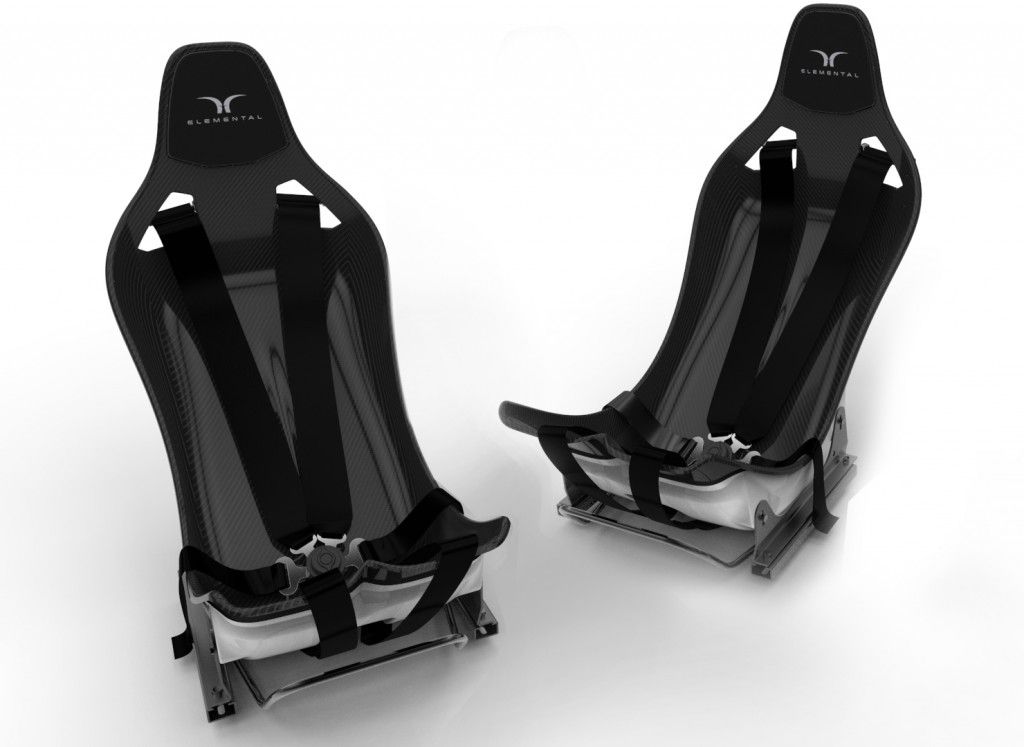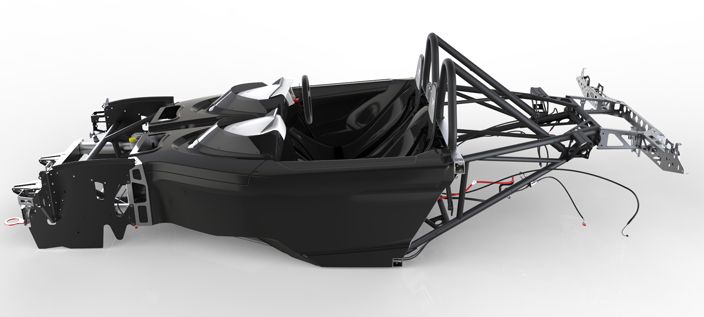What does it mean to create a car without compromise? After more than four years of development, Elemental Motor Company says it now has the answer – the Rp1. Although it’s Elemental’s very first production model, the Rp1 comes with loads of promise thanks to the experience of the individuals that created it, whose backgrounds include stints in aerospace and the top levels of motorsport. These influences become evident with one glance at the Rp1’s spec sheet – carbon-fiber tub, pushrod suspension, 0-to-60 mph in less than three seconds, and over 880 pounds of downforce at 150 mph. Oh, and one more thing – it’s street legal.
So then, what we have here is a highly advanced, expertly crafted, power-to-weight-obsessed destroyer of lap times that you can use to pick up your kid from school. Splendid.
This production Rp1 is actually the third iteration of the vehicle. Although an early prototype was released just last year, Elemental says it’s been quite busy in the interim.
“The collective sum of the adjustments we’ve made to make the production car amounts to a fundamental leap in terms of quality, driving dynamics, performance and safety over its forebear,” said John Begley, Elemental’s Technical Director and Founder.
The Rp1 will see its first public test in the Hillclimb at the Goodwood Festival of Speed, June 23rd to the 26th. But while it’s sure to put on an impressive show, what makes this particular British-made track special, well, special? Read on to find out.
Continue reading to learn more about the 2017 Elemental Rp1.
2017 Elemental Rp1
- Make: Array
- Model: 2017 Elemental Rp1
- Engine/Motor: inline-3
- Horsepower: 180
- [do not use] Vehicle Model: Array
History And Background
Based out of Hambledon, in Hampshire, Elemental was founded in 2012 by John Begley. Dissatisfied by the crop of high-performance vehicles available to the general public, Begley decided to improve the breed.
“When I was thinking of buying a track-day and competition car, having looked extensively and driven a number of existing cars, I realized that each one was compromised in some way – from the difficulty of set-up to the detailed design – they were simply not as good as they could be,” Begley is quoted on the Elemental website. “I believed I could do better.”
With a resume that included design work for race-winning touring cars, the McLaren Mercedes SLR, the McLaren 12C, the McLaren P1, and the McLaren Formula 1 team, Begley certainly had the know-how to do exactly that. But he couldn’t do it alone, so he assembled a team that included talent from Porsche, AMG, Pininfarina, Lotus, Airbus, Eaton Aerospace, and others, and set the benchmark at creating the ultimate four-wheeled physics breaker. Thus, Elemental Motor Company was born.
Exterior
At first blush, the Rp1 looks like it was styled by an algorithm. We’ve seen the look before – the front end, for example, is vaguely reminiscent of the Gumpert Apollo/Apollo N, and I don’t mean that as a compliment. Things get a little better as you move to the profile and rear, where the car gives a definite Lotus 3-Eleven vibe, but overall, the Rp1 won’t be winning any awards for aesthetics.
But that’s ok, because anyone who buys a track car solely on the way it looks is doing it wrong.
Either way, the Rp1’s performance intentions are obvious from the off. There are exposed composite sections intermingling with painted panels, all of which are made from carbon fiber and offer easy removal for maintenance and replacement. A view from above reveals a carbon fiber “spine” running from front to back, while a single polished exhaust outlet is high and center on the tail.
Unsurprisingly, the stance is incredibly close to the ground. Elemental’s website states that this is for aero purposes alone, but goes on to say “…unsubstantiated rumors claim that John Begley wanted the car to be low enough to drive under the entry barrier at the McLaren Technical Centre where he worked at the time.”
Aerodynamics – Look ‘Ma, No Wings!
Possible impromptu test sessions aside, the Rp1 looks the way it does for one reason, and one reason only – grip. Ungodly amounts of grip.
Designed using Computational Fluid Dynamics software and tested in a wind tunnel, the aero package seeks to maximize cornering speed without conceding straight-line acceleration. Basically, more downforce, but less drag.
So how do you have your aerodynamic cake and eat it too? The answer lies at ground level.
While most high-performance racers make downforce via gigantic wings stuck to the body (which consequently create enormous amounts of drag), the Rp1 uses a flat underbody and two diffusers, one in front and one in the rear. Complemented by a sizable front splitter, this set-up creates a low-pressure area underneath the car, effectively sucking the Rp1 down towards the pavement and yielding incredible levels of downforce, minus the associated drag. And because most Elemental customers won’t have an F1 license, the underfloor and splitter are made from plywood, keeping repair costs down in the event of an off-road excursion.
But don’t let the craft store material fool you – this is still one very serious package. The Rp1 starts to create “meaningful downforce” at just 60 mph, and by the time it hits 100 mph, there’s an extra 200 kg (441 pounds) pushing down on the tires. Hit 150 mph, and that figure doubles. And that’s just in the standard road height settings – according to Elemental, even more downforce can be had with a proper track-focused set-up.
Exterior Dimensions
|
Width |
1,775 mm (69.9 Inches) |
|
Track |
1,544 mm (60.8 Inches) |
|
Length |
3,740 mm (147.2 Inches) |
|
Wheelbase |
2,525 mm (99.4 Inches) |
|
Height |
1,070 mm (42.1 Inches) |
|
Ground Clearance (adjustable) |
110 mm (4.3 Inches) |
Interior
Unsurprisingly, a session in the Rp1’s cockpit is a serious affair. Included is all the usual equipment – there’s an LED multi-function display from Motec on the dash (plus a CAN data feed), a push-button starter, and a quick-release steering wheel with controls for the turn signals, horn, and headlights. A fixed steering wheel is available as well. Whatever isn’t bare carbon fiber is trimmed in waterproof suede.
Thankfully, the Rp1 also has a few basic amenities for the ride home, like a 12-volt power socket, a USB phone charger, and heated foot wells. A wrap-around windscreen keeps some of the bugs out of your teeth, and for those uninterested in pulling a full Jeremy Clarkson, Elemental says it’ll offer a heated and laminated glass windshield as an available option.
Hilariously, there’s even 200 liters (seven cubic feet) of storage in the rear, which is more cargo space than you get with the next-gen Mazda MX-5.
Sitting Pretty
However, the most notable feature of the Rp1’s “interior” has to be the “feet-up” seating position. Both driver and passenger recline at 30 degrees, much like in a Formula 1 car or World Endurance prototype. According to Mark Fowler, Elemental co-founder and Bodywork and Aerodynamics Lead, this allows more space for the front diffuser, a critical component to the car’s aero package. It also makes for a more intimate link between driver and machine.
The seats are made from carbon fiber, and come equipped with six-point racing harnesses from Willans. Adjustability was added for seat height, tilt, and front-to-back sliding. The pedal box is also adjustable, down to individual pedal placement. All this adjustability means the Rp1 should have no problem accommodating drivers between 5’0” and 6’6” in height.
Drivetrain
The Rp1 uses a mid-mounted, longitudinal drivetrain layout. Early in development, the automaker considered using motorcycle engines for motivation, but ended up going with FoMoCo’s Ecoboost line for enhanced user friendliness.
Starting things off is a turbocharged 1.0-liter three-cylinder producing 180 horsepower, while the range-topper gets a turbocharged 2.0-liter four-cylinder producing 320 horsepower. It should also be noted that the three-cylinder is lighter than the four, which helps to make up for the sizable power deficit.
Both powerplants get a Life Racing ECU and custom engine management, twin air-to-air intercoolers, and a custom steel exhaust. An auxiliary water pump and radiator fan helps it cool down after an extended track outing.
Routing the output is a Hewland JFR six-speed sequential gearbox, controlled via steering-wheel-mounted paddles. This gearbox can swap cogs in as little as 40 milliseconds, and doesn’t require the use of the clutch once the car is in motion.
Drivetrain Specifications
|
Engine |
Horsepower |
Top Speed |
0-To-60 MPH |
0-To-100 MPH |
0-To-100-To-0 MPH |
|
1.0-liter three-cylinder |
180 |
145 mph |
3.2 seconds |
7.8 seconds |
12.2 seconds |
|
2.0-liter four-cylinder |
320 |
165 mph |
2.8 seconds |
6.4 seconds |
10.8 seconds |
Chassis And Handling
Like any good track-day special, the Rp1 can attribute a good deal of its head-spinning performance potential to an incredibly low curb weight. At the heart of the matter is Elemental’s patented CarbonAI tub, which tips the scales at a scant 65 kg (143.3 pounds). Made from F1-grade carbon fiber, the tub exceeds FIA standards for strength and rigidity.
Added to the tub is an aluminum body structure, with an aluminum foam core used for the floors and bulkheads. A steel tube frame connects the drivetrain and suspension to the tub, with a front cradle and rear trapezium links supporting the engine.
Although the 2015 prototype weighed just 650 kg (1,433 pounds), Elemental managed to cut the production version down to just 580 kg (1,279 pounds). Opt for the 1.0-liter engine, and that figure drops to 540 kg (1,191 pounds).
And for those of you keeping score at home, that means it produces up to 500 horsepower and 553 pound-feet of torque per metric ton.
But it’s not just about saving weight when it comes to handling. Where the weight is placed on the chassis can be equally as important.
To that end, the radiator was mounted in the nose, while the 50-liter fuel tank was placed near the front diffuser. Design features like these mean the Rp1 has a nearly perfect 50/50 weight distribution (48/52 with the 1.0-liter, 46/54 with the 2.0-liter), plus a center of gravity similar to a strand of spaghetti.
The suspension components are all lightweight and pure motorsport. Uprights and unequal-length dual wishbones are used front to back, with Eibach springs and double-adjustable Nitron dampers. Inboard rockers and turnbuckle pushrods adjust the front dampers, while the rear dampers use turnbuckle adjustment for ride height changes after corner weighting. There are spherical joints outboard for the rear wishbones, but urethane bushes were used inboard for slightly improved comfort.
The whole chassis is highly tunable, with adjustments made both by hand, and with simple tools. This trickles down to the standard traction control, which offers five different settings for tire slip and engine mapping, ranging from road to race. Drive modes are selectable via a button panel located centrally in the cabin.
The steering is an unassisted rack-and-pinion set-up, which Elemental says is available in a variety of different ratios.
Running gear includes 17-inch wheels in front and 18-inch wheels in back, while the tires are measured at 215/45R17 in front and 245/40R18 in back.
Finally, the brakes are from AP, with four-piston calipers and 280 mm (11-inch) vented rotors at each corner. There’s also an optional brake balance bar.
Prices
There’s no nice way to say this, so I’ll just come out and say it – the 2017 Elemental Rp1 starts at 77,250 pounds (or $111,687 at current exchange rates, 06/09/2016).
That’s a lot, but considering how much performance you get for the money, it could be worth it.
Customers deal directly with the factory when it comes to their car’s spec, and each purchase is offered with the option for track instruction.
As of this writing, there’s no official word as to how much the Rp1 will cost when it lands stateside.
Competition
Ariel Atom 3.5R
When talking about stripped-down track-day specials from the U.K., you’ve gotta at least mention Ariel, but to find a worthy opponent for the Rp1, you’ve gotta bypass the lower rungs and head straight for the Atom 3.5R. Motivation comes from a supercharged 2.0-liter four-cylinder producing 350 horsepower and 243 pound-feet of torque, which hits the rear axle hard enough to propel the Atom to 60 mph in just 2.6 seconds. That’s two-tenths quicker than the fastest Rp1, but considering the Atom’s outdated aero package, I think these two would make for an epic track showdown.
Read the full review here.
KTM X-Bow
If you’re looking for almost all the thrills, but in a more streetable package, KTM has a solution. The X-Bow is still quick, hitting 60 mph in a little over four seconds, while the body offers impressive downforce figures. However, the X-Bow also gets luxuries like a full windscreen and doors. While it may not be the most comfortable machine on the planet, the X-Bow still manages to find a nice balance between coddling and speed.
Read the full review here.
Conclusion
At first glance, this initial offering from Elemental may seem as though it errs a bit too much on the mental side of things. But take a step back, and it all makes perfect sense.
To state the obvious, the Rp1 takes performance very, very seriously. But that’s what happens when you get a bunch of race-winning engineers together and tell them to make something fast, then bolt on some headlights and a license plate. The Rp1 is motorsport unhinged from the rule back, with just a thin veneer of street-legality applied on top.
But why should you buy it over an Ariel, or a KTM, or a BAC, or a Radical, or a Caterham? The answer is simple – modernity.
The Rp1 uses every trick short of rocket boosters to out-accelerate, out-brake, and most importantly, out-turn the competition. From the carbon tub, to the low-drag aero, to the adjustable traction control, the Rp1 is a finely honed tool meant for the creation of speed above all else, even all the way down to the inclined seating position.
And that, my friends, is how you improve the breed.




